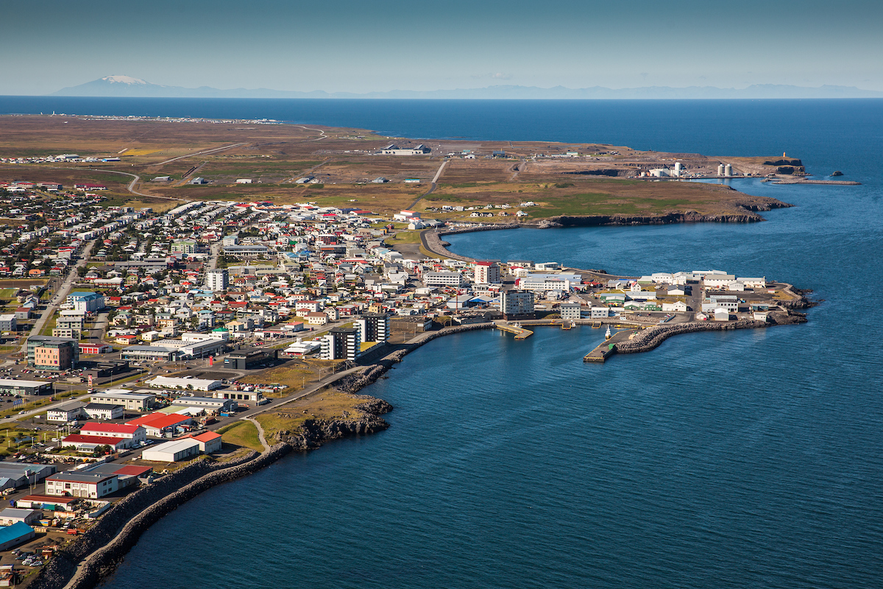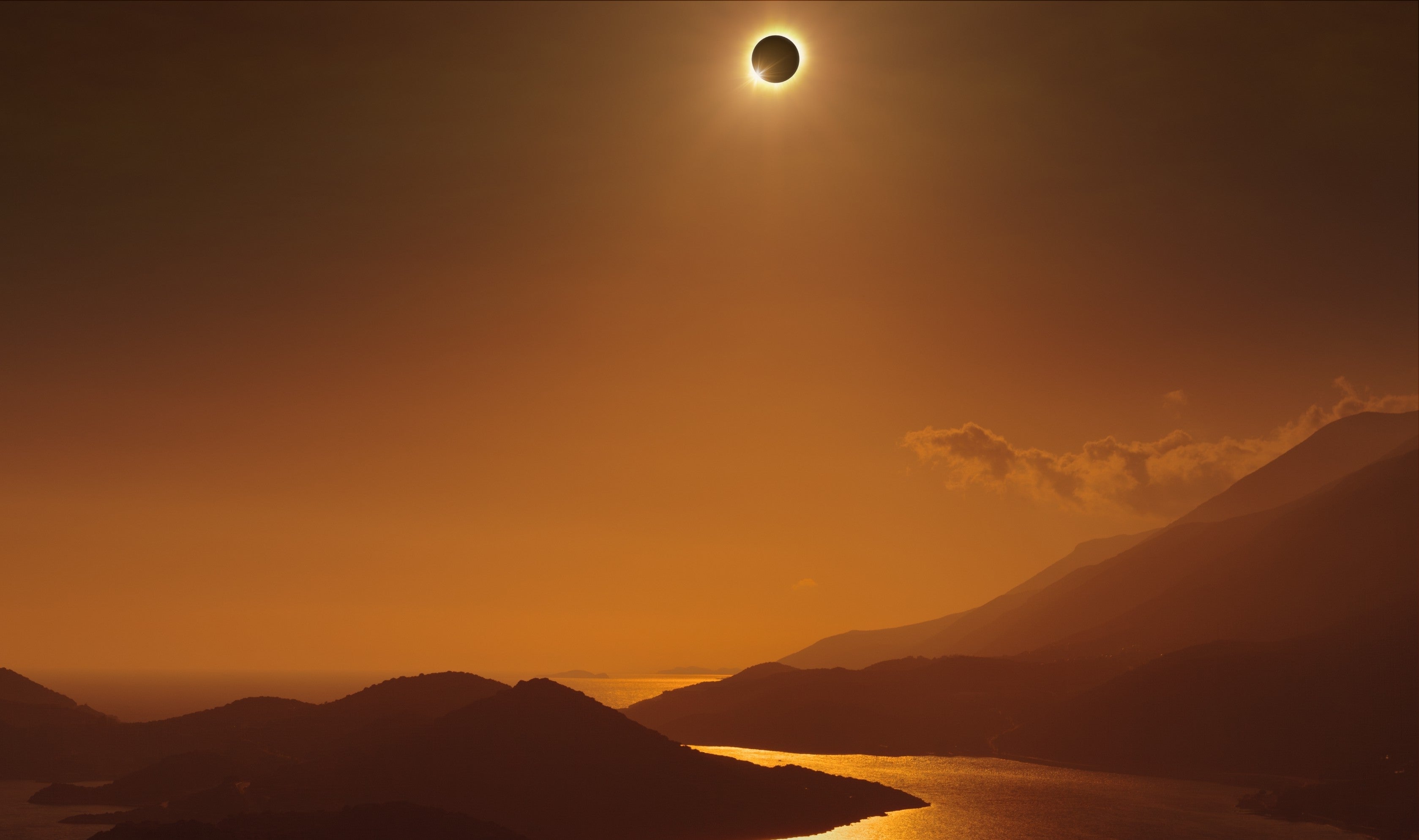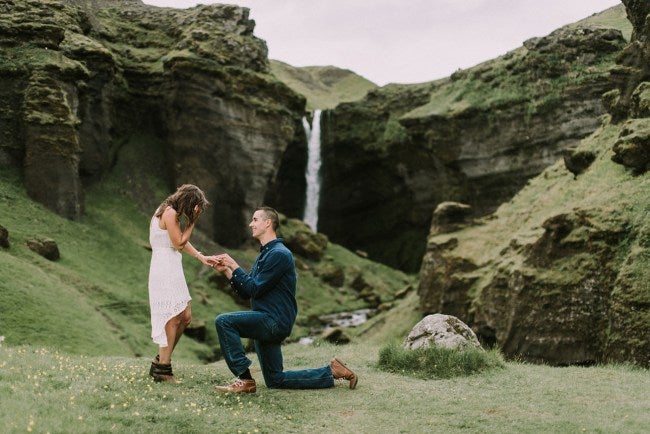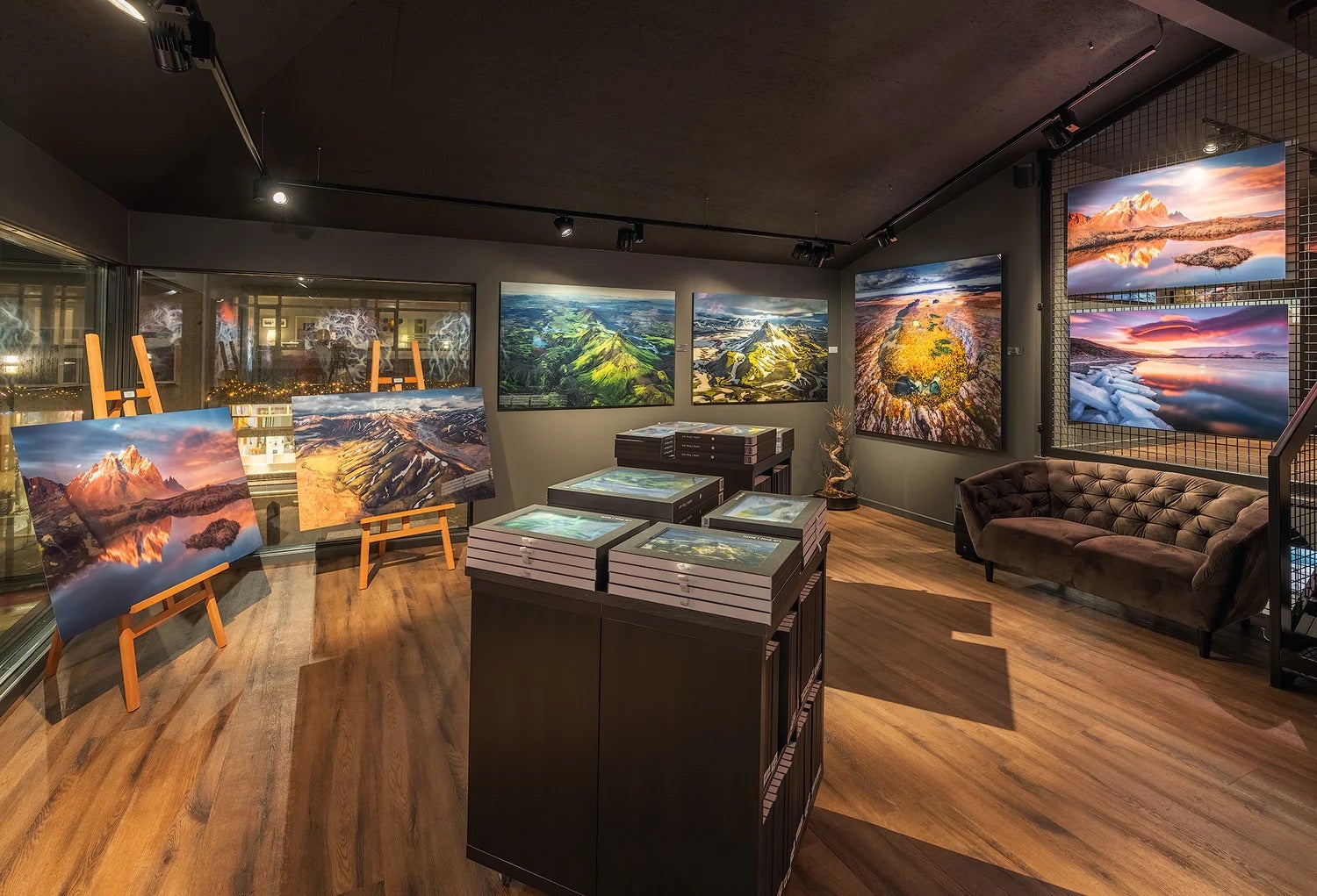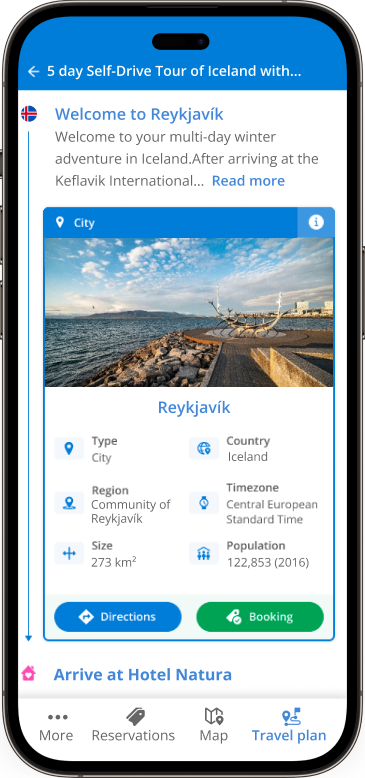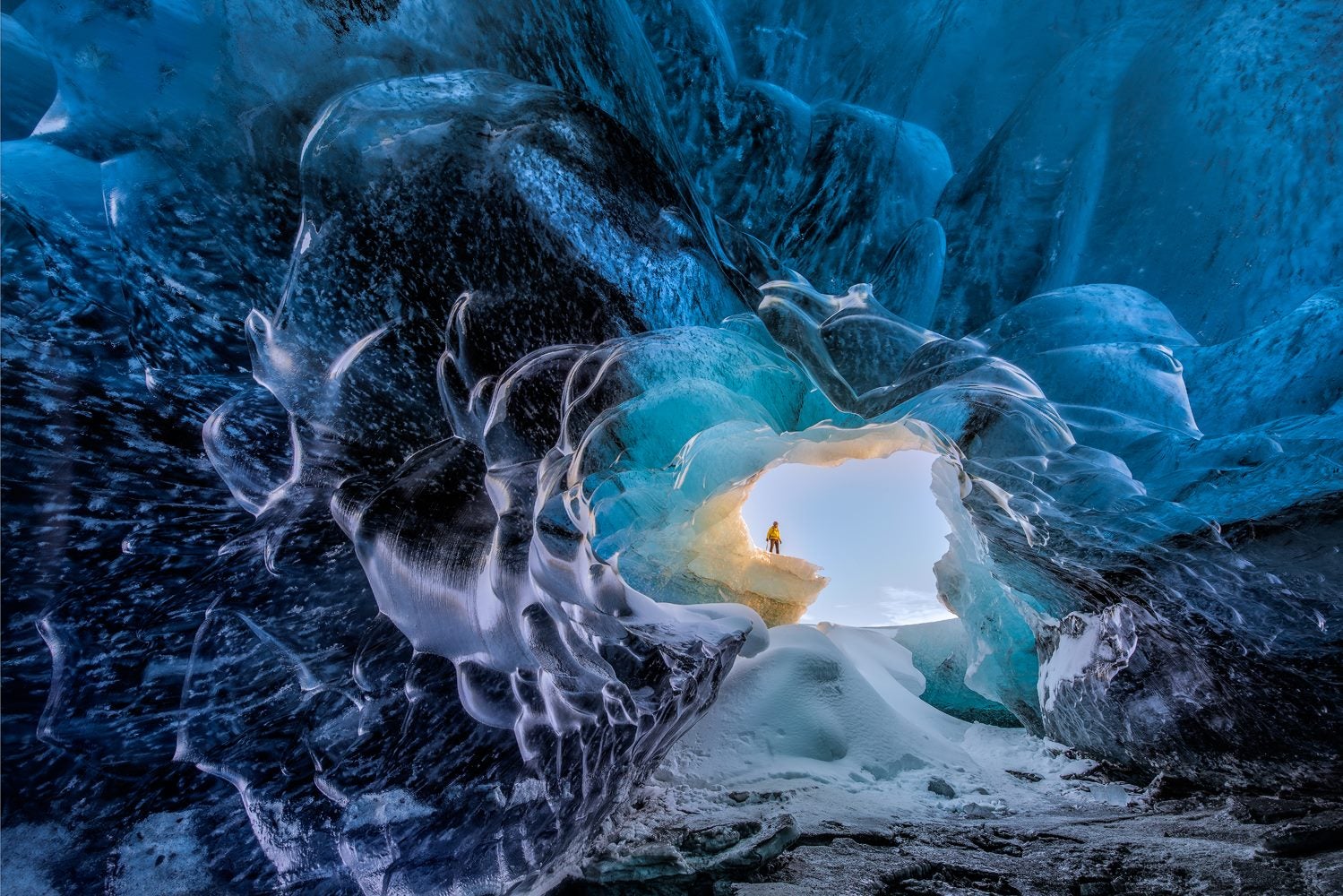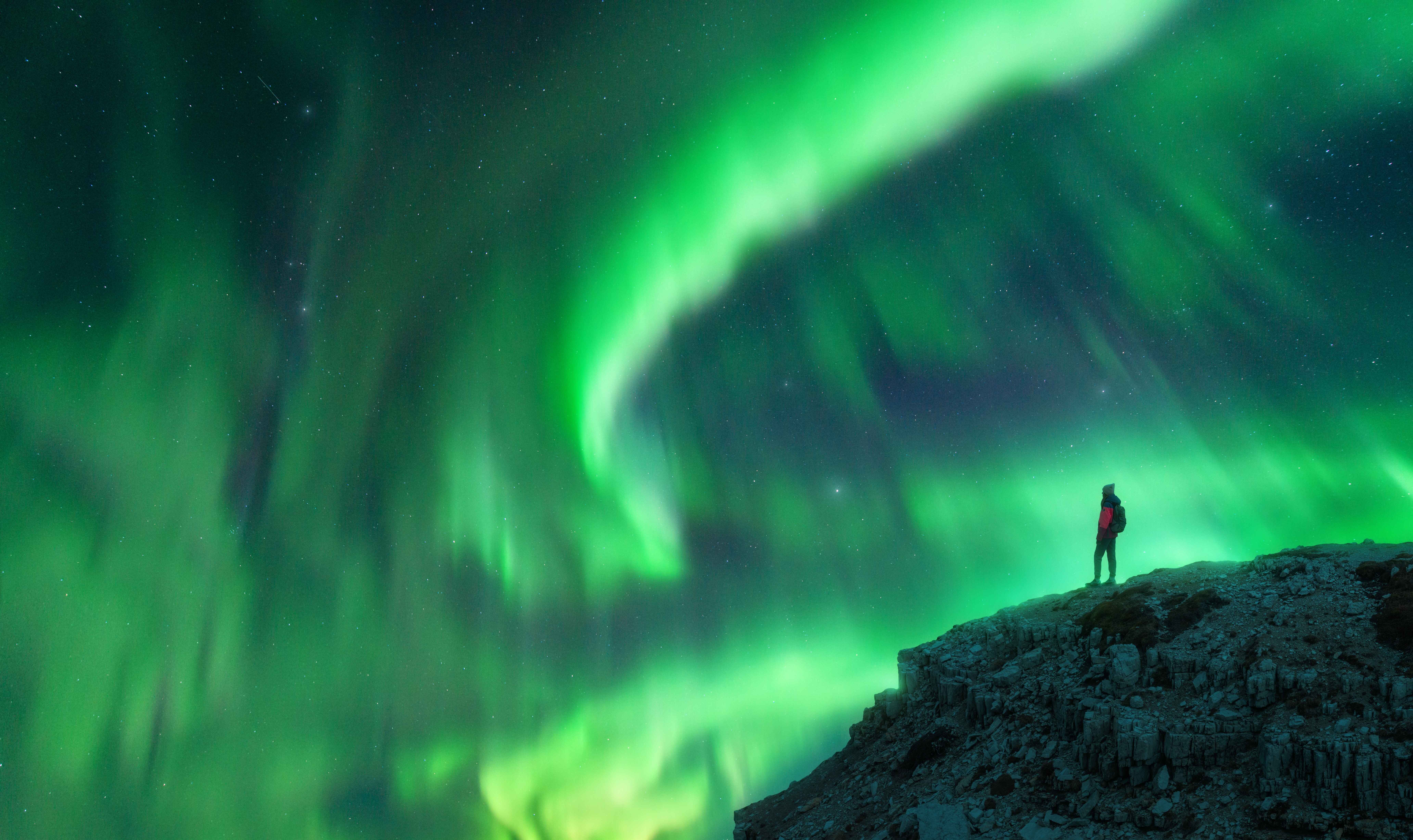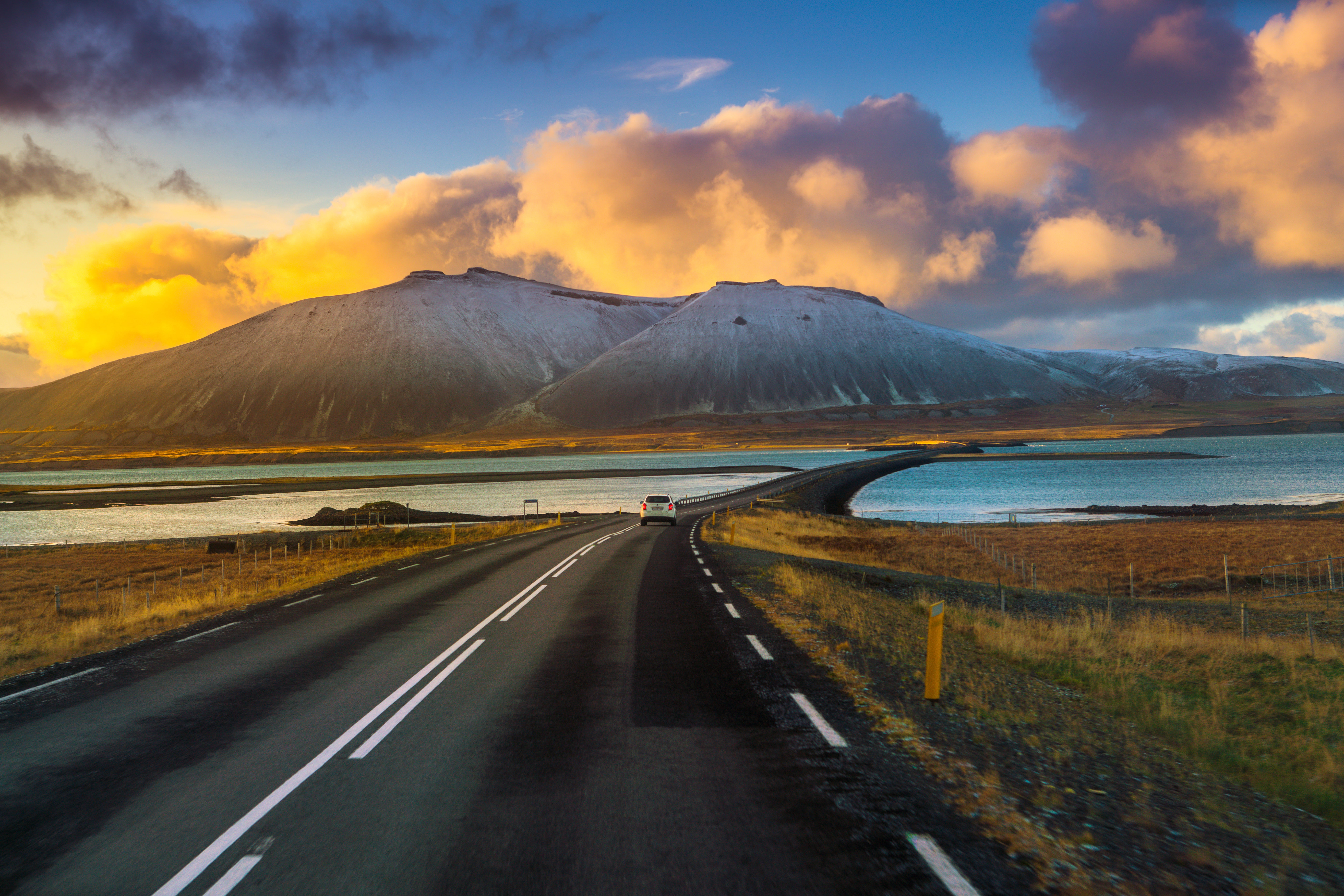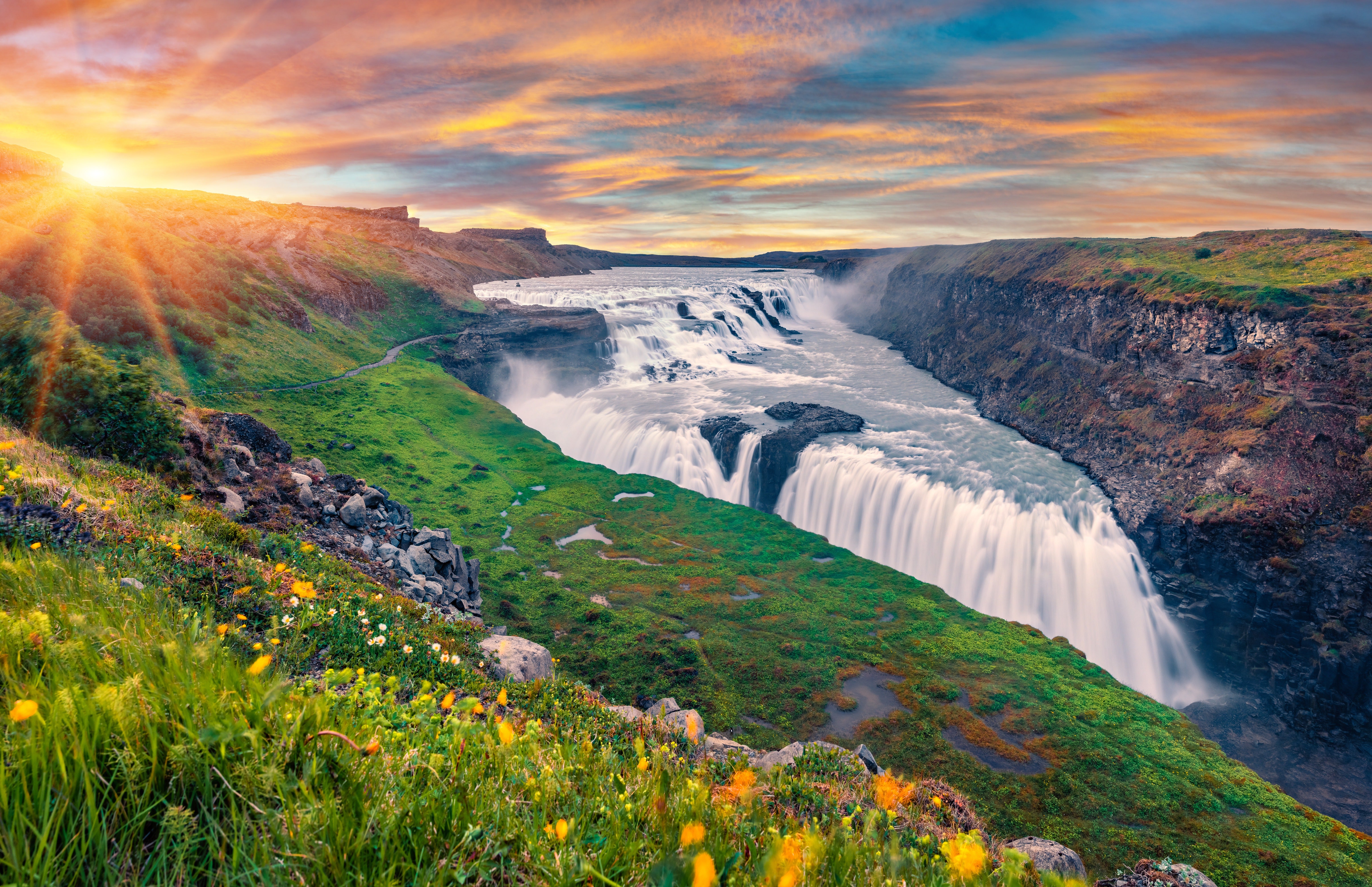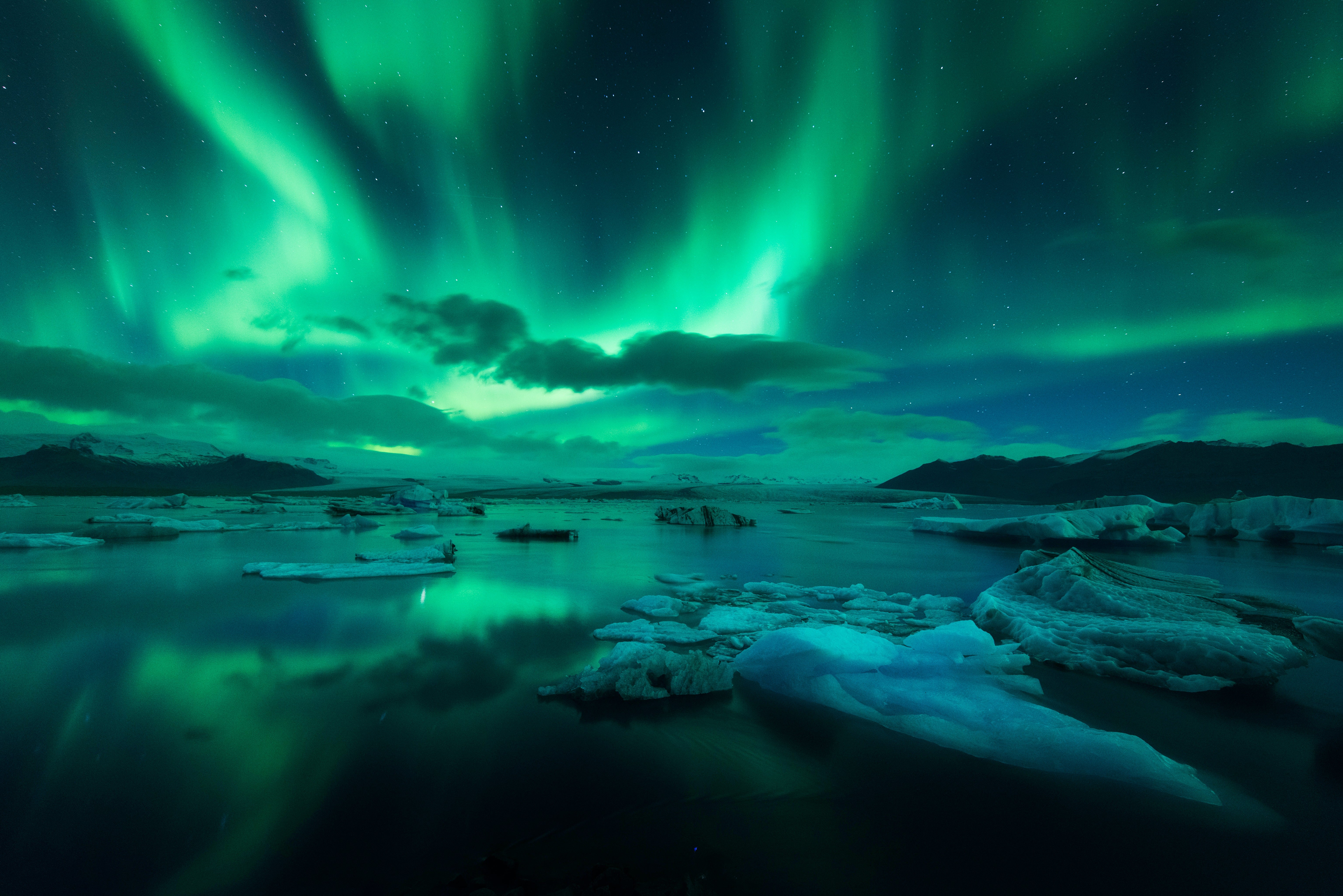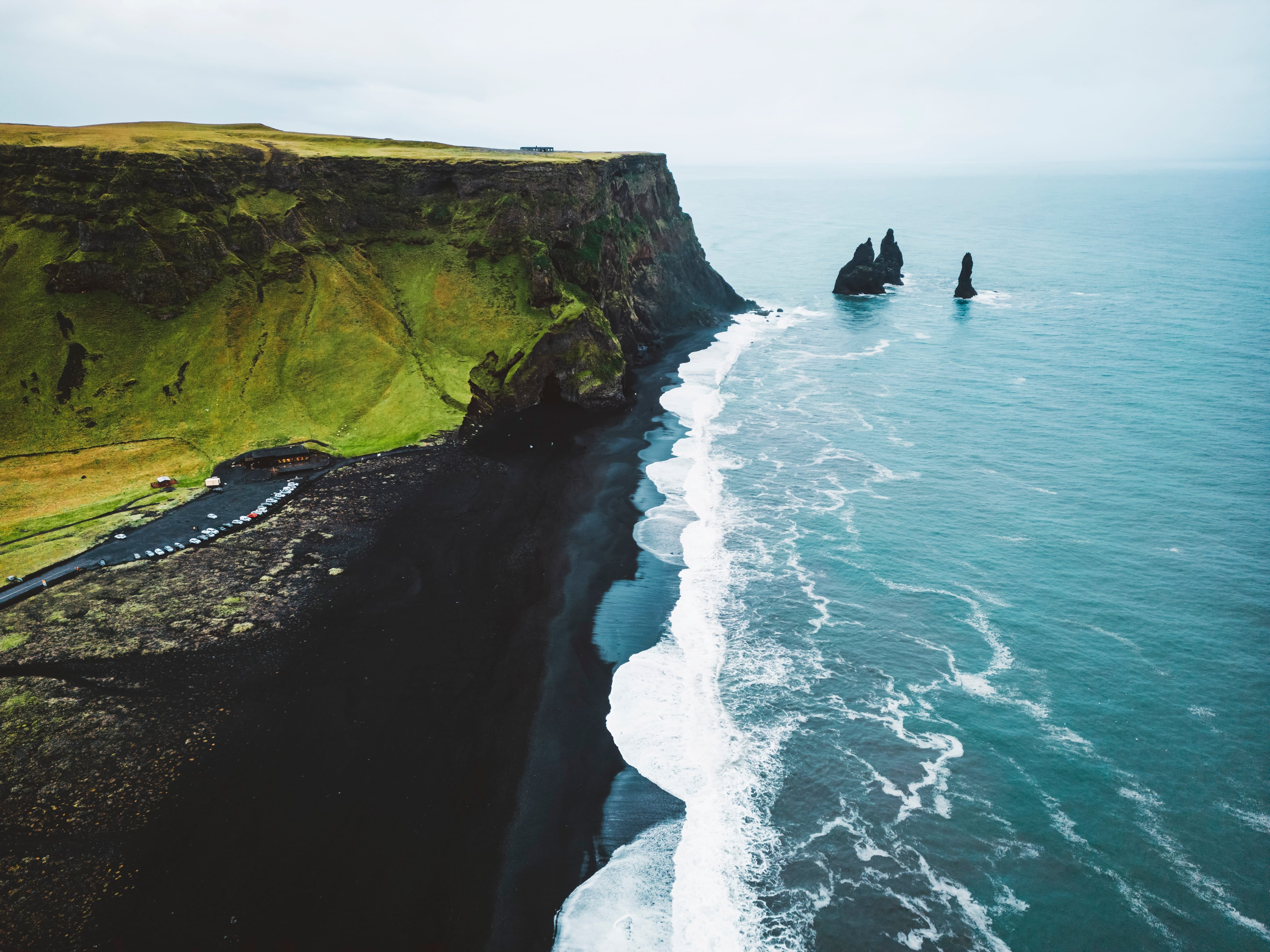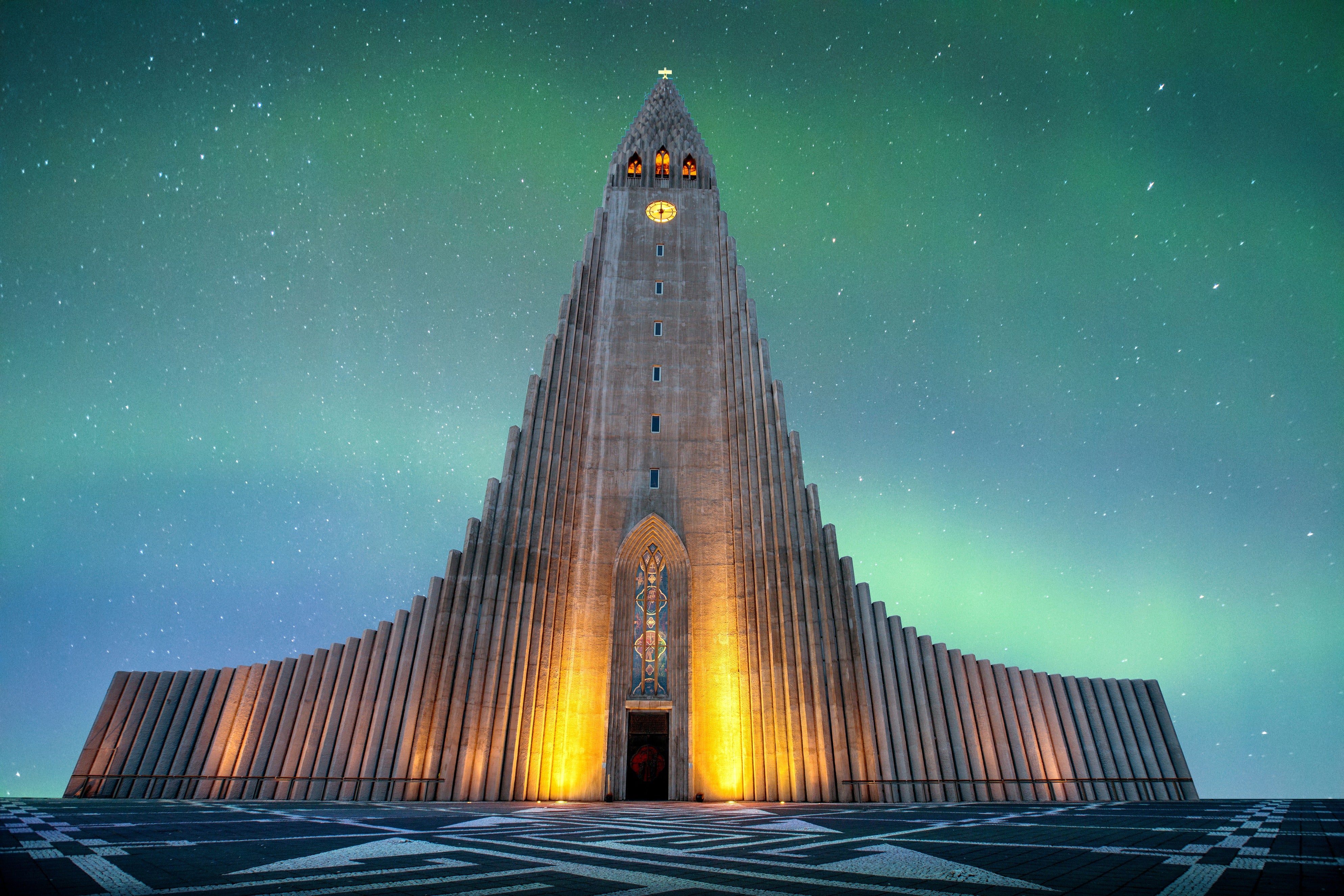Keflavik, located just 31 miles (50 kilometers) from Reykjavik, is known for its rugged lava landscapes, breathtaking Atlantic views, and Iceland’s main international airport. Once a bustling fishing village, Keflavik has slowly evolved into a quiet but fascinating base for travelers.
Keflavik is also a gateway to the top tours and activities on the Reykjanes Peninsula. You'll find some of Iceland's most unique natural sights, including the one-of-a-kind Blue Lagoon, only a short drive or bus transfer away.
Why You Can Trust Our Content
Guide to Iceland is the most trusted travel platform in Iceland, helping millions of visitors each year. All our content is written and reviewed by local experts who are deeply familiar with Iceland. You can count on us for accurate, up-to-date, and trustworthy travel advice.
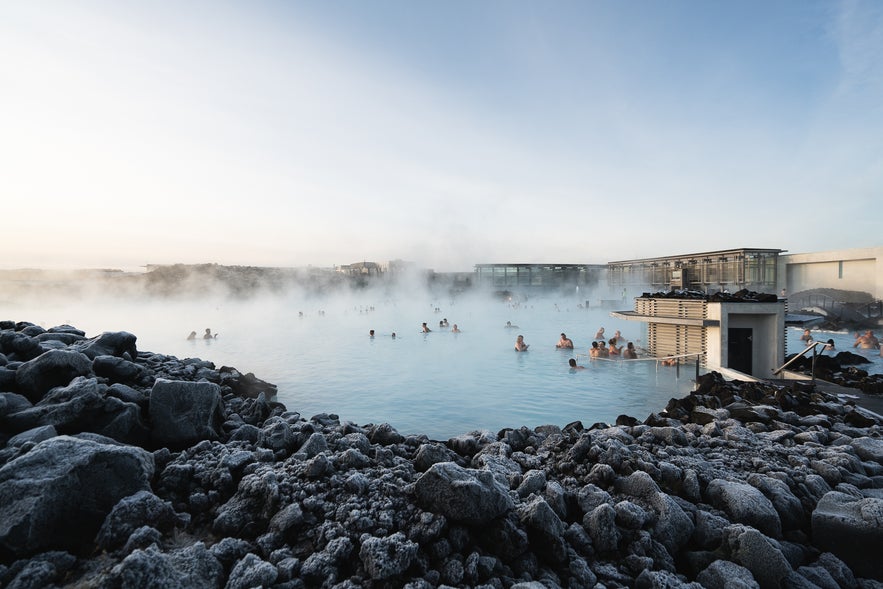 Staying in Keflavik gives you the perfect launchpad to explore the underrated attractions of the Reykjanes Peninsula. It works well for a first or last night in Iceland, especially if you’re arriving late, catching an early flight, or planning to explore other top destinations in the region.
Staying in Keflavik gives you the perfect launchpad to explore the underrated attractions of the Reykjanes Peninsula. It works well for a first or last night in Iceland, especially if you’re arriving late, catching an early flight, or planning to explore other top destinations in the region.
If you want to explore the surrounding area, renting a car or picking up a campervan is your best option. The roads are well-marked, and key sights, such as Gunnuhver Geothermal Area and the Bridge Between Continents, are all within easy reach.
Whether you're staying overnight or squeezing in a quick stop, here are the top things to do in Keflavik that are worth your time.
Key Takeaways
-
Keflavik is more than a transit town. It’s a great place to experience Iceland’s natural beauty, culture, and local charm right from arrival.
-
The town offers a mix of geothermal relaxation, folklore, maritime history, and coastal scenery that’s both accessible and memorable.
-
It’s a convenient base for reaching some of Iceland’s most famous sights, including the Blue Lagoon and the geological wonders of the Reykjanes Peninsula.
-
Transportation is simple and flexible, whether you're self-driving, taking a tour, jumping aboard a transfer bus, or traveling by campervan.
-
Many of the top things to do in Keflavik are low-cost or free, making it a smart and budget-friendly stop on any Iceland trip.
12. Take in the Views at Gardsskagi Lighthouses
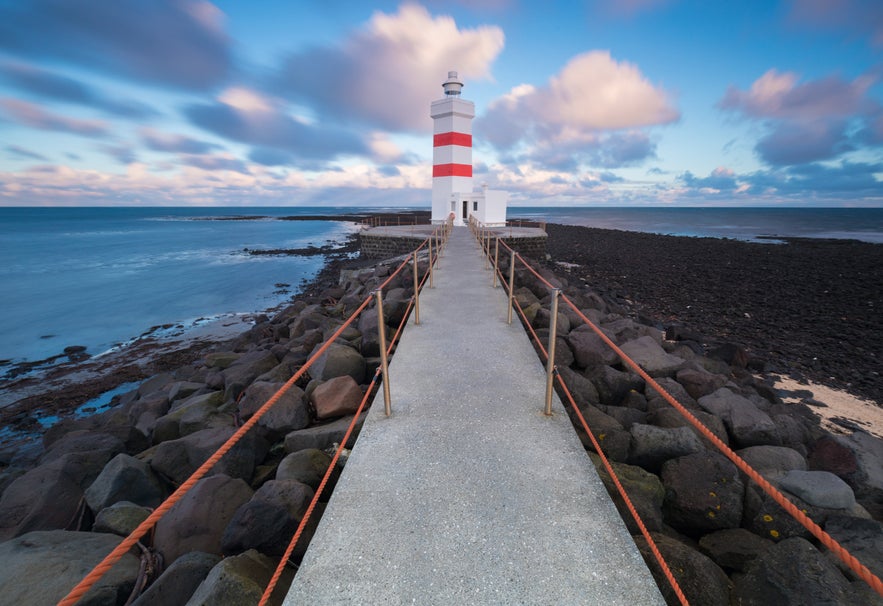 Located at the tip of the Reykjanes Peninsula, the Gardsskagi Lighthouses offer a peaceful coastal escape with wide views over Faxafloi Bay. The site features two towers: the older lighthouse, built in 1897, and the newer, taller one, constructed in 1944. Both are striking against the open sky and make a scenic stop for photos or a quiet walk along the shore.
Located at the tip of the Reykjanes Peninsula, the Gardsskagi Lighthouses offer a peaceful coastal escape with wide views over Faxafloi Bay. The site features two towers: the older lighthouse, built in 1897, and the newer, taller one, constructed in 1944. Both are striking against the open sky and make a scenic stop for photos or a quiet walk along the shore.
The area around the lighthouses is renowned for its birdlife and stunning sunsets, especially in summer when the skies remain bright well into the evening. There’s also a small cafe and a local heritage museum open in the warmer months, with displays about maritime history and the lighthouse keepers who once worked here.
Gardsskagi is one of the best free things to do near Keflavik. It’s just a 15-minute drive from Keflavik’s town center, following Route 45 north through the village of Gardur.
The road is well signposted and leads directly to the tip of the peninsula, where you'll find the lighthouses and coastal walking paths. There’s plenty of parking, and the site is flat and easy to explore on foot.
- Read more: Lighthouses in Iceland
11. Visit the Icelandic Museum of Rock’n’Roll
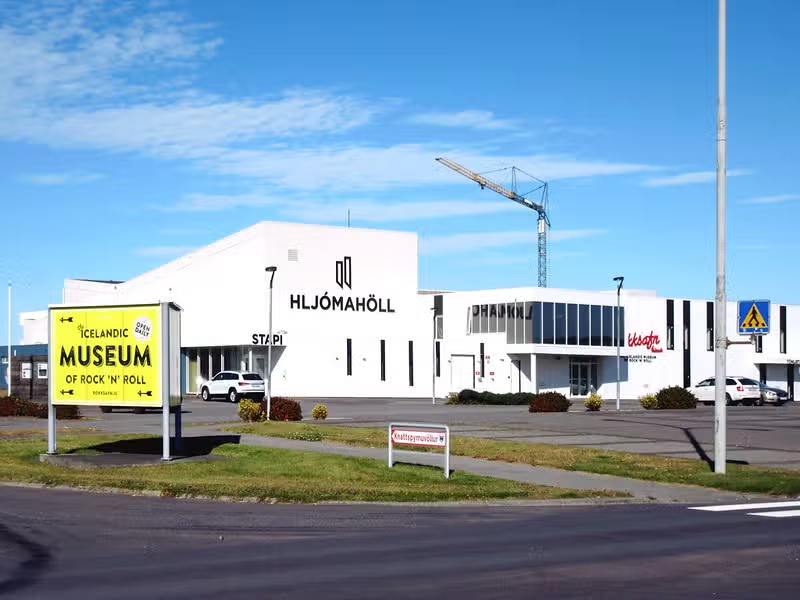
The Icelandic Museum of Rock ’n’ Roll is an interactive museum that celebrates the story of Icelandic music, from early pop pioneers to today’s international stars like Bjork and Of Monsters and Men. Located in Keflavik’s Hljomaholl Cultural Center, the museum offers an engaging look at the evolution of the country’s music scene.
Exhibits include rare recordings, vintage instruments, music videos, and personal stories. You can explore the timeline of Icelandic rock, put on headphones to sample tracks from different decades, and try DJ'ing or karaoke in one of the sound booths. Touchscreens and audio guides are available in both English and Icelandic.
Visitors can explore the museum year-round, except on New Year's Day, Good Friday, Easter Sunday, Christmas Eve, Christmas Day, and New Year's Eve. The museum is admission-free starting from 2025. It’s a top choice for music lovers and curious travelers looking for enriching free things to do in Keflavik.
- See also: Music in Iceland
- Find out: The Best Live Music Venues in Iceland
10. Relax and Recharge at a Keflavik Swimming Pool
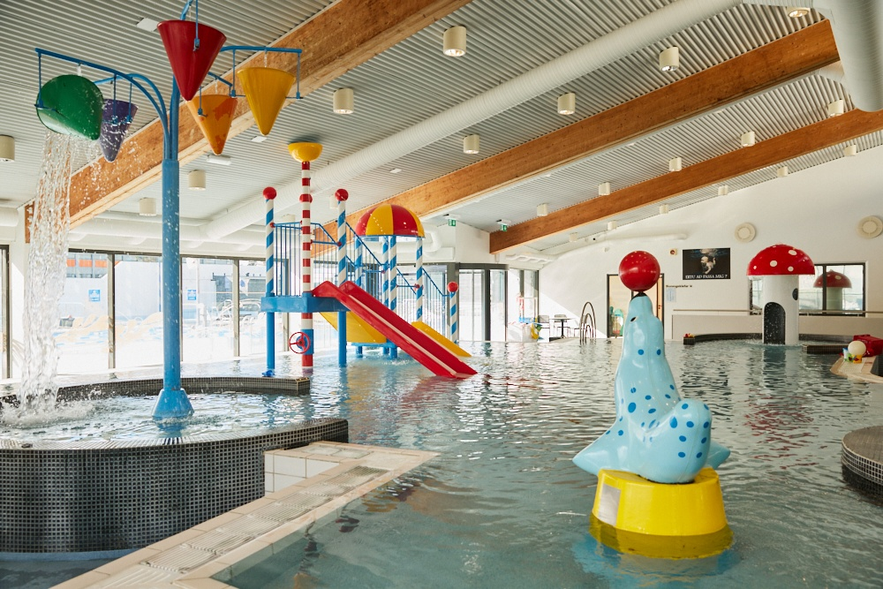
Sundlaug Reykjanesbaer (also known as Sundmidstodin or Waterworld) is located in downtown Keflavik at Sunnubraut 31. It’s a full complex with indoor and outdoor pools, hot tubs, steam rooms, and a waterslide. Locals often come here to relax in the evenings or start their day with a soak.
Bring your own towel and swimsuit, or rent them on site. Like all Icelandic pools, it’s required to shower thoroughly without swimwear before entering. Once you’re floating in the warm water, it all feels worth it!
- Read more: Best Swimming Pools in Iceland
- See also: Swimming Pool Etiquette in Iceland
9. Watch the Northern Lights
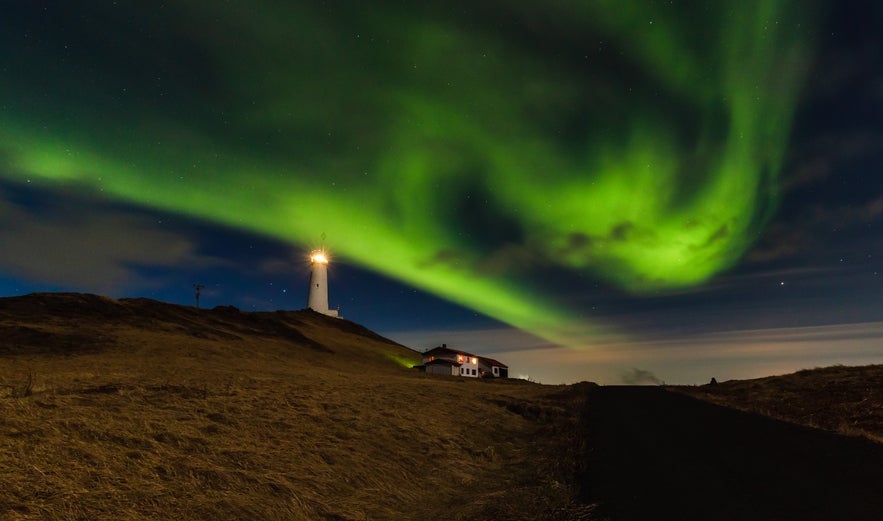 One of the top things to do in Keflavik from late September to April is to witness the mesmerizing northern lights. During these months, the town offers dark skies with minimal light pollution, making it an ideal location for viewing the auroras.
One of the top things to do in Keflavik from late September to April is to witness the mesmerizing northern lights. During these months, the town offers dark skies with minimal light pollution, making it an ideal location for viewing the auroras.
Harbor paths, nearby hills, or the coastline beyond town are great places to wait for aurora activity. Some hotels offer wake-up alerts when the lights appear. On active nights, you can even see them from your guesthouse doorstep.
If you’re flying into Keflavik International Airport, it’s easy to join a multi-day trip that includes northern lights viewing. Such tours begin with airport pickup and combine aurora hunting with top attractions, such as the Golden Circle, and activities like ice caving. For a more relaxing experience, consider a northern lights and Blue Lagoon tour from Keflavik.
Remember to bring a fully-charged phone or camera for photos and dress warmly for your northern lights outing. It can get windy and cold after dark. Check the aurora forecast and cloud cover before heading out. The best displays usually happen between 22:00 and 02:00.
- Read more: When & Where to See the Northern Lights in Iceland
- Discover: The Best Time to See the Northern Lights in Iceland
8. Stroll Around Keflavik Harbor
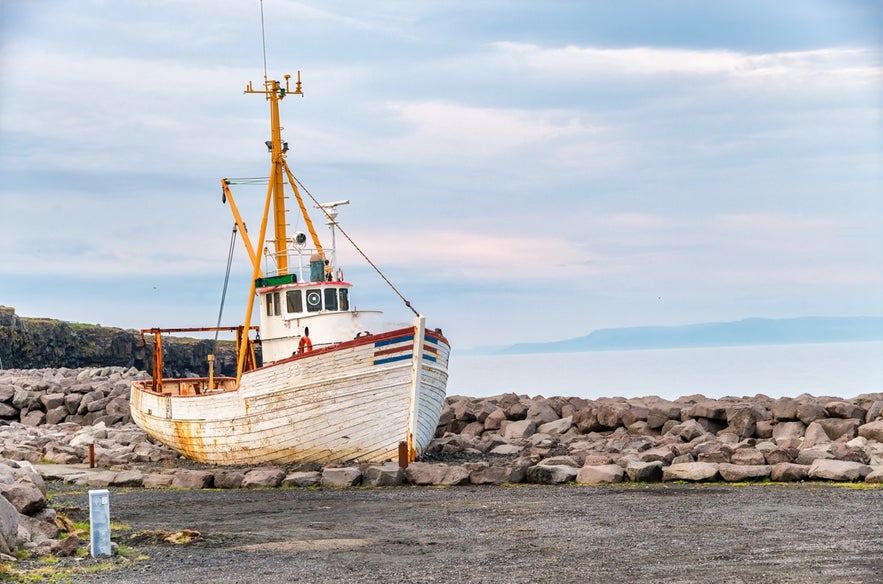
Along the dock, you’ll find local art installations, benches, and views across the bay. In summer, the evening sky remains bright for hours. In winter, it’s a good northern lights viewing spot when the skies are clear.
Keflavik Harbor has also started welcoming small to mid-sized cruise ships, especially during the spring and summer months. While larger vessels still dock in Reykjavik, Keflavik is becoming a convenient entry point for cruise passengers looking to explore the Reykjanes Peninsula and nearby attractions.
You can easily combine a harbor stroll with visits to the Duus Museum, the Giantess in the Mountain, or nearby cafes. The area is flat and walkable from most hotels in town. No need for a guide, just follow the path and enjoy the view.
- Read more: Traveling to Iceland by Cruise Ship
7. Step Inside Stekkjarkot Turf House
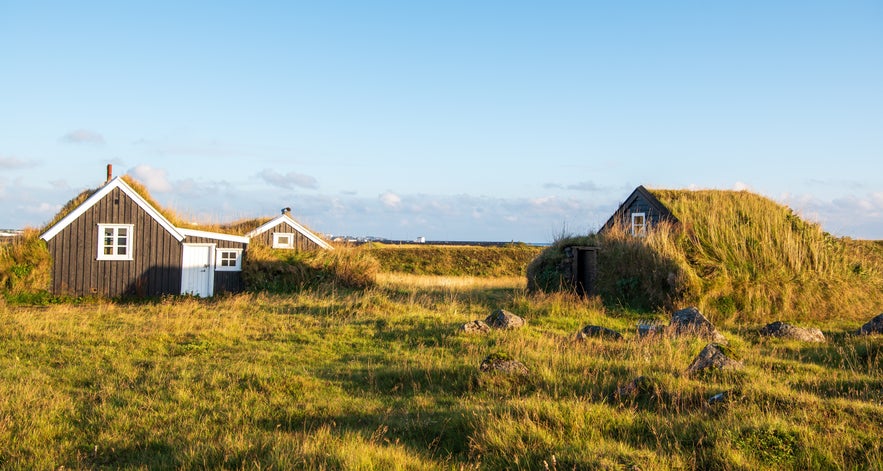 Located just outside Keflavik, Stekkjarkot is a restored turf house that offers a glimpse into 19th-century coastal Icelandic life. Originally built between 1855 and 1857, it served as a fisherman's cottage until its abandonment in 1924. After a year of restoration, it was opened to the public in 1993.
Located just outside Keflavik, Stekkjarkot is a restored turf house that offers a glimpse into 19th-century coastal Icelandic life. Originally built between 1855 and 1857, it served as a fisherman's cottage until its abandonment in 1924. After a year of restoration, it was opened to the public in 1993.
The structure showcases traditional building techniques, combining thick stone walls, a timber frame, and a turf-covered roof. This combination provided insulation and stability, helping residents endure Iceland’s harsh winters. The older section features an open hearth, while the newer part includes floorboards and a coal-fired stove.
Today, Stekkjarkot is open to visitors and offers free admission. Although it may be closed in winter, the exterior can be viewed at any time, with informative signs detailing its history. It's a worthwhile stop for those interested in folk architecture or seeking unique things to do in Keflavik.
- See also: Icelandic Turf Houses
- Read more: Guide to Turf Houses in Iceland
6. Explore Seafaring History at the Keflavik Maritime Center
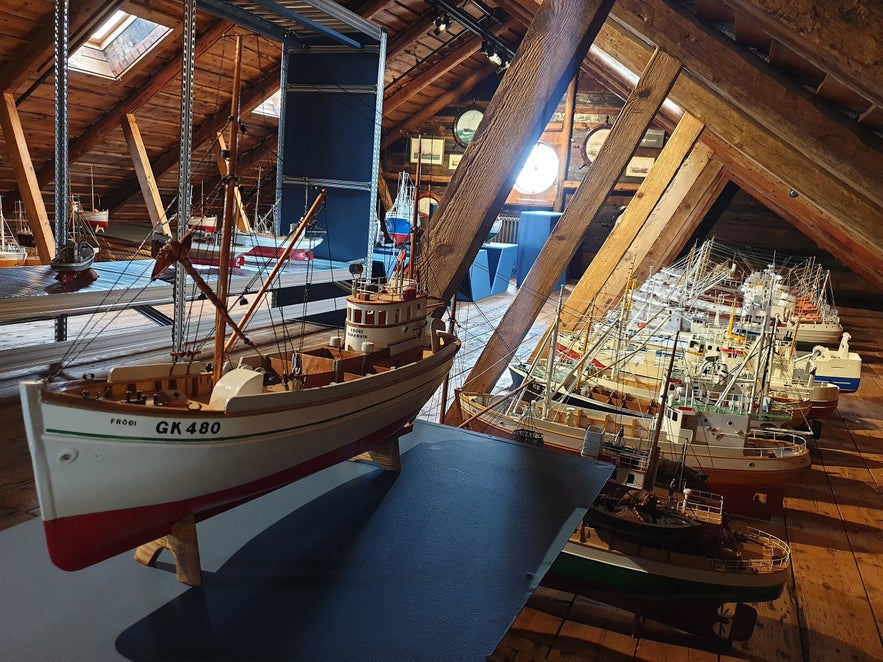
Photo from Wikimedia, Creative Commons, by Steinninn. No edits made.
Situated within the Duus Museum complex, the Keflavik Maritime Center is a small but engaging museum that dives into the region’s rich fishing history. Keflavik has long depended on the sea, and this museum brings that story to life with boats, engines, and exhibits that trace the evolution of the local fishing industry.
You’ll see beautifully crafted ship models, photos of early fishermen, and traditional tools used along the coast. Many displays are in both Icelandic and English, reflecting the deep connection between the sea and everyday life in Reykjanes over the past century.
The museum is open Tuesday to Sunday from 12:00 to 17:00 and is closed on Mondays. Entry is free for children under 18 and visitors with disabilities. The Keflavik Maritime Center is among the best things to do in Keflavik for anyone interested in history or maritime heritage, especially as part of a relaxed afternoon walk around town.
- Read also: Best Museums in Iceland
- Find out: The Top Weirdest Museums in Iceland
5. Explore the Duus Museum
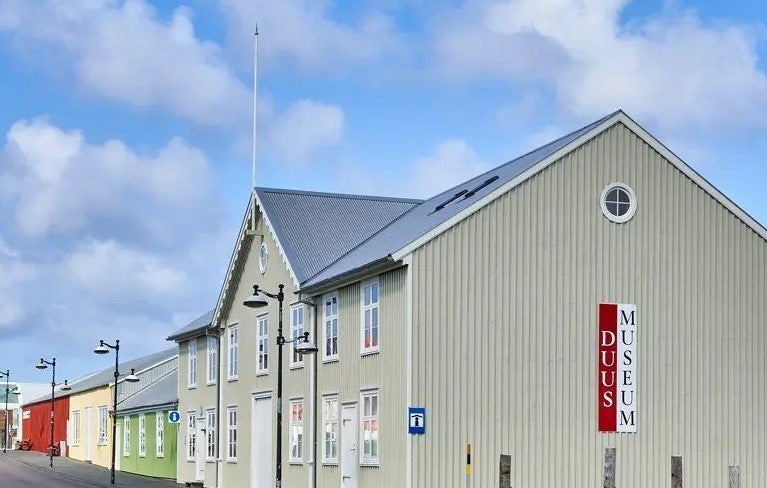 Set along the harbor, the Duus Museum is one of the top Keflavik attractions and serves as the town’s main cultural hub. Housed in restored waterfront buildings, it combines history, art, and maritime heritage under one roof. The setting is scenic and quiet, perfect for travelers looking to explore Icelandic culture beyond Reykjavik.
Set along the harbor, the Duus Museum is one of the top Keflavik attractions and serves as the town’s main cultural hub. Housed in restored waterfront buildings, it combines history, art, and maritime heritage under one roof. The setting is scenic and quiet, perfect for travelers looking to explore Icelandic culture beyond Reykjavik.
Inside, you’ll find rotating exhibitions from local artists, model boats, historic photographs, and artifacts from the town’s fishing past. The space feels open and bright, with large windows offering views of the ocean. It’s a great place to learn about the community’s roots in trade, fishing, and seafaring.
The museum is open year-round, Tuesday to Sunday from 12:00 to 17:00, and is closed on Mondays. Admission is free for children under 18 and visitors with disabilities.
Plan to spend about 45 minutes here. Afterwards, stop by Kaffi Duus, the cozy harborfront café and restaurant next door, for coffee, cake, or a full meal with a view. If you're staying overnight, Hotel Duus is right on site, offering scenic accommodations within walking distance of the town's top attractions.
- See also: Top Museums in Reykjavik
4. Meet the Giantess in the Cave
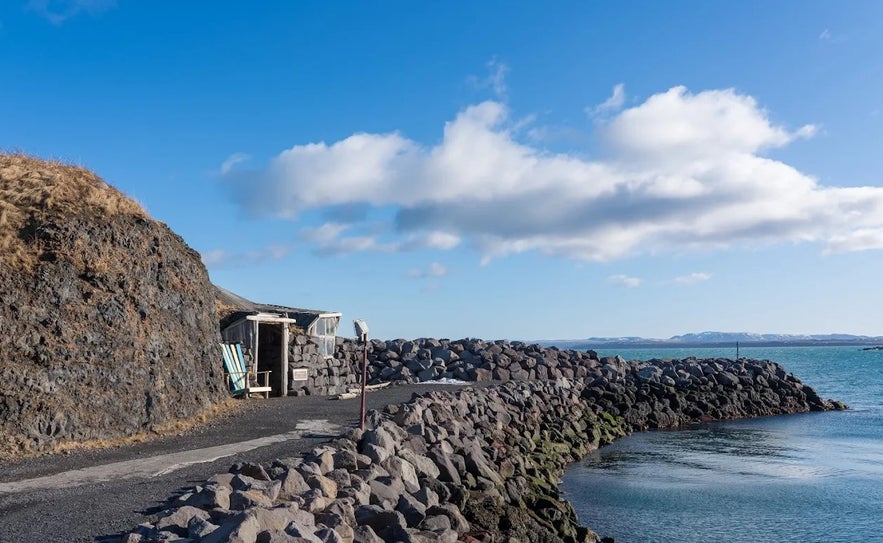 One of the unique things to do in Keflavik is visiting the Giantess in the Cave, a folklore-inspired installation inside a small cave-like building by the harbor. Based on the children’s stories by Icelandic author Herdis Egilsdottir, the attraction brings to life a kind-hearted giantess who moves from the mountains into town.
One of the unique things to do in Keflavik is visiting the Giantess in the Cave, a folklore-inspired installation inside a small cave-like building by the harbor. Based on the children’s stories by Icelandic author Herdis Egilsdottir, the attraction brings to life a kind-hearted giantess who moves from the mountains into town.
Inside, you’ll step into a dimly lit room filled with oversized furniture, a crackling fireplace, and the snoring giantess herself slumped in a rocking chair. Her long braids and hairy toes complete the scene, which is both amusing and just eerie enough to thrill kids and adults alike.
The exhibit is open daily from 10:00 to 17:00 and is free to enter. It only takes about 10 minutes to explore, making it a fun and quick stop while walking along the harbor.
You’ll find the Giantess in the Cave behind the Duus Museum, right along the waterfront. It’s a perfect visit for families, folklore fans, or anyone curious about Iceland’s unique cultural imagination.
- Read also: Myths and Legends in Iceland
- See also: Folklore in Iceland
3. Discover the Wonders of the Reykjanes Peninsula
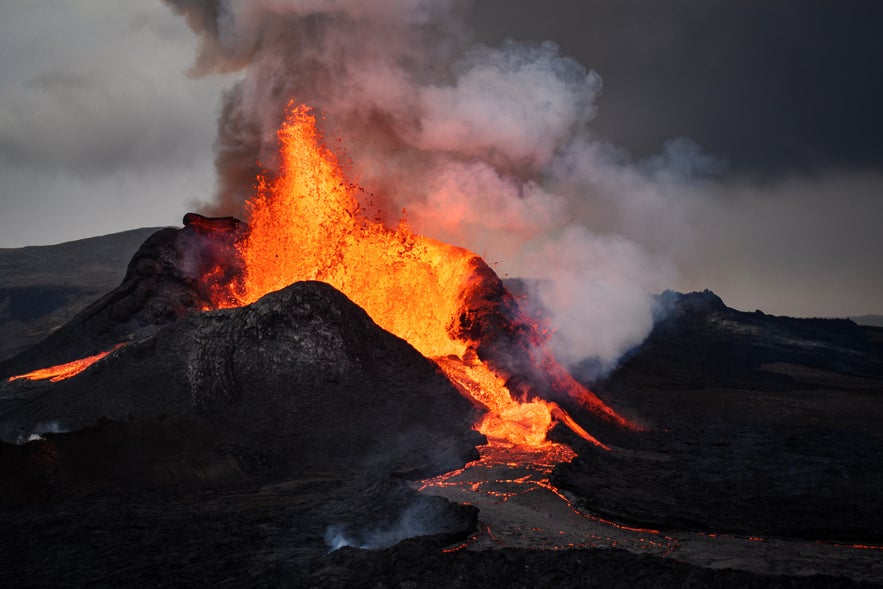 Exploring the Reykjanes Peninsula is one of the most unforgettable things to do in Keflavik, and it’s just minutes from town. This region is one of Iceland’s most geologically active and visually striking, shaped by volcanic forces, shifting plates, and crashing Atlantic waves.
Exploring the Reykjanes Peninsula is one of the most unforgettable things to do in Keflavik, and it’s just minutes from town. This region is one of Iceland’s most geologically active and visually striking, shaped by volcanic forces, shifting plates, and crashing Atlantic waves.
Many Reykjanes tours take you through steaming vents, bubbling mud pools, volcanic craters, and wave-battered cliffs, perfect for travelers drawn to raw, elemental beauty. Reykjanes offers an otherworldly fusion of fire and sea.
Plan a full day if you want to see everything, and pack windproof layers as this coastline is stunning, but famously breezy. Here are the top sights to explore in the Reykjanes Peninsula.
Gunnuhver Hot Springs
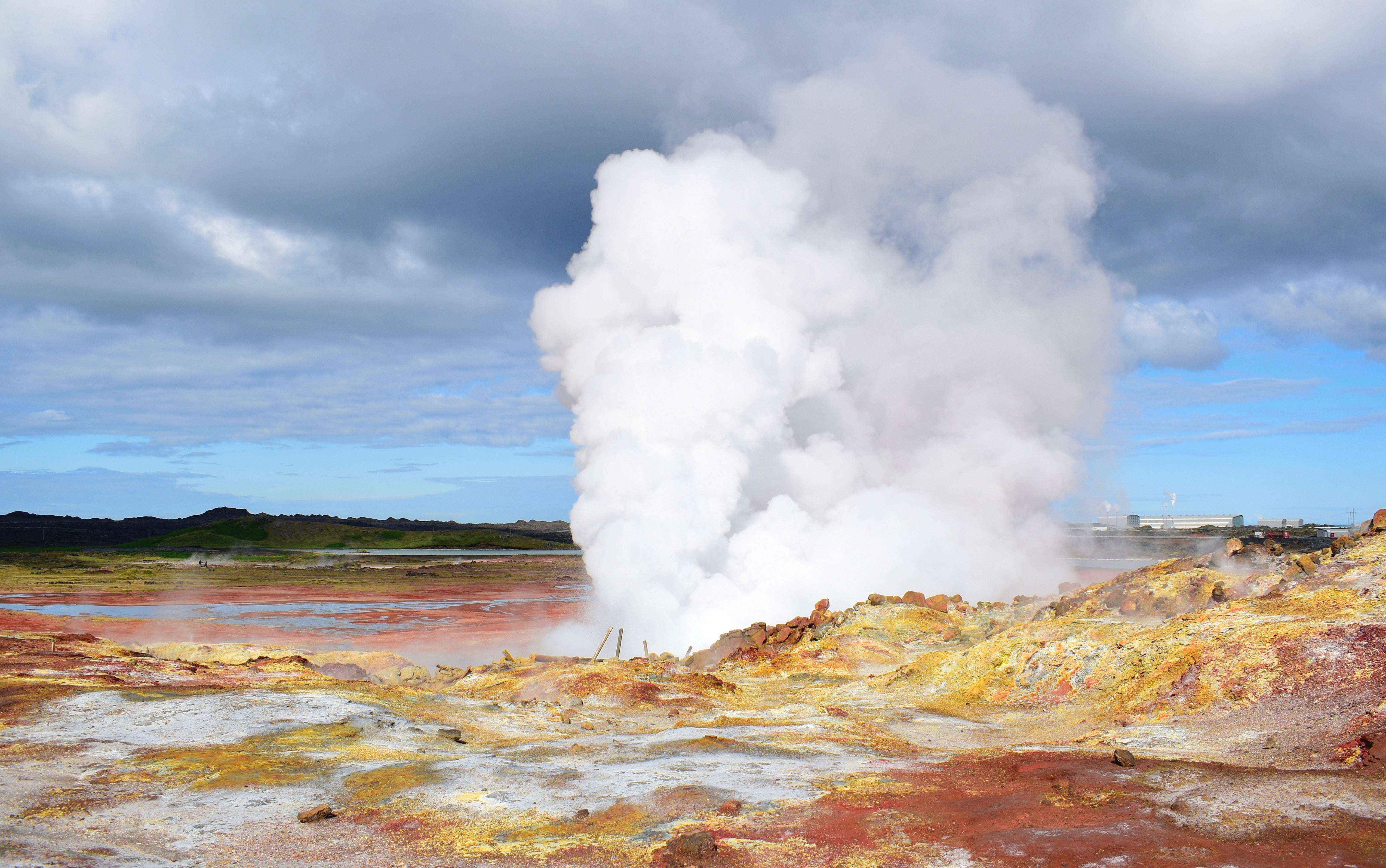 Gunnuhver is the largest geothermal mud pool in Iceland and one of the most active in the country. Steam rises thick from the ground, bubbling through boiling mud and cracked earth. The smell of sulfur is strong, and wooden walkways bring you right to the edge of the geothermal field for safe but up-close views.
Gunnuhver is the largest geothermal mud pool in Iceland and one of the most active in the country. Steam rises thick from the ground, bubbling through boiling mud and cracked earth. The smell of sulfur is strong, and wooden walkways bring you right to the edge of the geothermal field for safe but up-close views.
This site is named after a legendary ghost, Gunna, who was said to have been trapped on Earth by a local priest. The landscape feels as eerie as the story. You won’t find tourist shops or fences here, just raw geothermal energy and wide-open sky. It’s free to visit and accessible year-round.
Brimketill Lava Pool
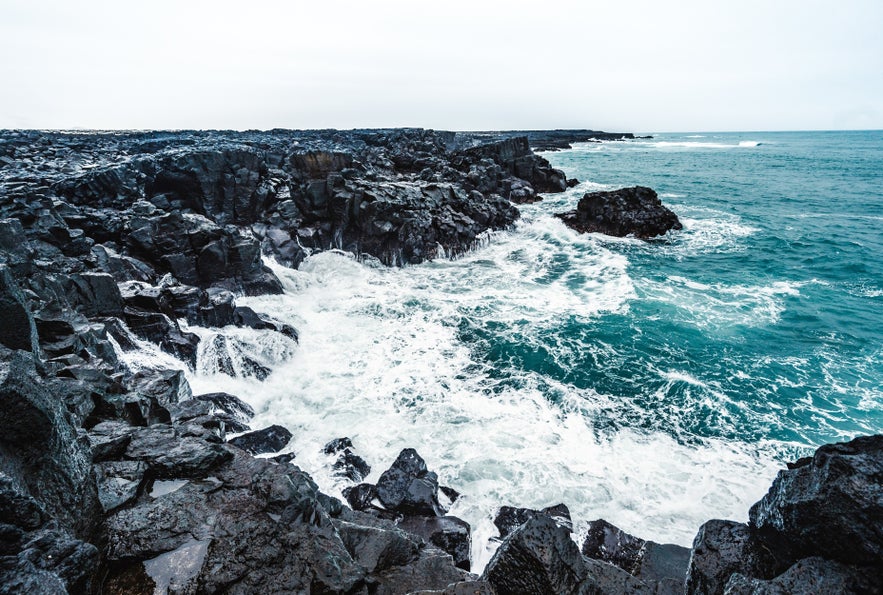 Brimketill is a natural lava rock pool formed right at the ocean’s edge. Waves crash against the jagged shoreline and occasionally spray into the basin, creating a spectacular display.
Brimketill is a natural lava rock pool formed right at the ocean’s edge. Waves crash against the jagged shoreline and occasionally spray into the basin, creating a spectacular display.
There’s a metal walkway leading to a viewing platform where you can safely enjoy the view. Swimming is strictly prohibited due to unpredictable and powerful waves that can crash over the rocks without warning.
Visit during high tide or rough seas for the most dramatic effect. It’s a quick stop, but unforgettable. The site is just off Route 425 and has a small parking lot nearby.
Reykjanesviti Lighthouse and Sea Cliffs
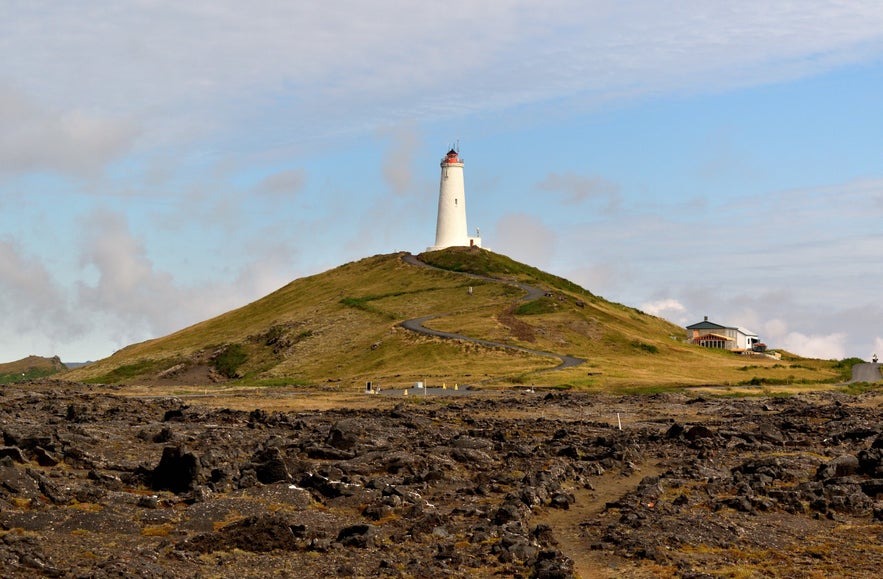 Reykjanesviti Lighthouse is the oldest in Iceland, dating back to 1878. It sits on a hill surrounded by steaming vents and volcanic rock, overlooking some of the wildest sea cliffs on the peninsula. You’ll often see seabirds circling above and waves slamming into the rocks far below.
Reykjanesviti Lighthouse is the oldest in Iceland, dating back to 1878. It sits on a hill surrounded by steaming vents and volcanic rock, overlooking some of the wildest sea cliffs on the peninsula. You’ll often see seabirds circling above and waves slamming into the rocks far below.
The surrounding area is ideal for short walks. Trails lead out to viewing points where you can see the full force of the Atlantic against the cliffs. It’s one of the best spots on the peninsula for rugged coastal scenery, and a great place to stop before or after Gunnuhver.
Bridge Between Continents
 The Bridge Between Continents is a short but symbolic footbridge that spans a fissure between the North American and Eurasian tectonic plates. You can literally walk from one continent to the other in just a few steps.
The Bridge Between Continents is a short but symbolic footbridge that spans a fissure between the North American and Eurasian tectonic plates. You can literally walk from one continent to the other in just a few steps.
Interpretive signs explain the tectonic forces shaping Iceland, and the area is scattered with black sand, lava fragments, and open fissures. It’s an easy, family-friendly stop with a small parking area and walking path. Though brief, it’s one of the most unique things to do near Keflavik.
Krysuvik Geothermal Area
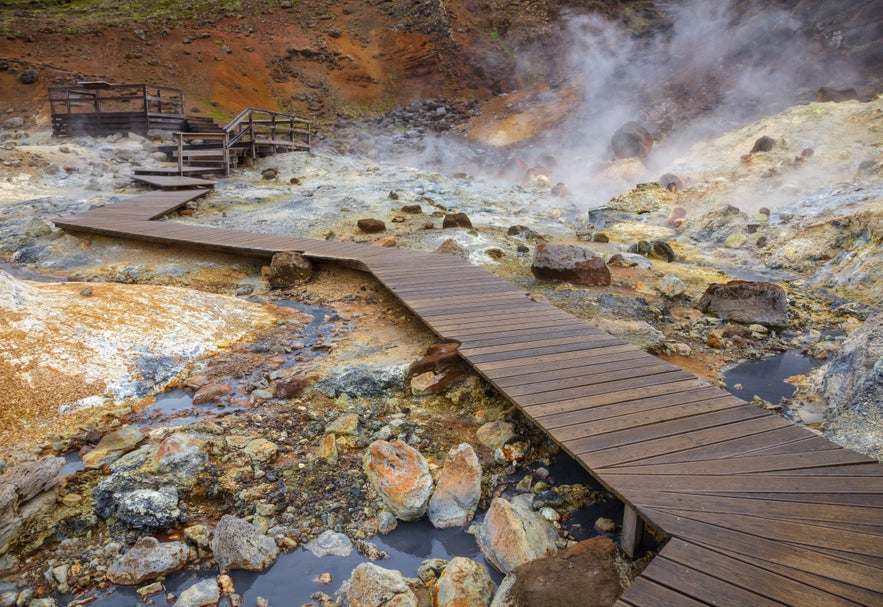 Krysuvik, located a little deeper inland, offers a more colorful and expansive geothermal experience. The area is filled with steaming vents, hot springs, and mineral-stained earth in shades of yellow, red, and green. Wooden boardwalks allow you to explore safely across the active ground.
Krysuvik, located a little deeper inland, offers a more colorful and expansive geothermal experience. The area is filled with steaming vents, hot springs, and mineral-stained earth in shades of yellow, red, and green. Wooden boardwalks allow you to explore safely across the active ground.
It’s less crowded than other geothermal areas in Iceland, but just as visually stunning. Plan to spend 30–45 minutes walking the trails.
Lake Kleifarvatn
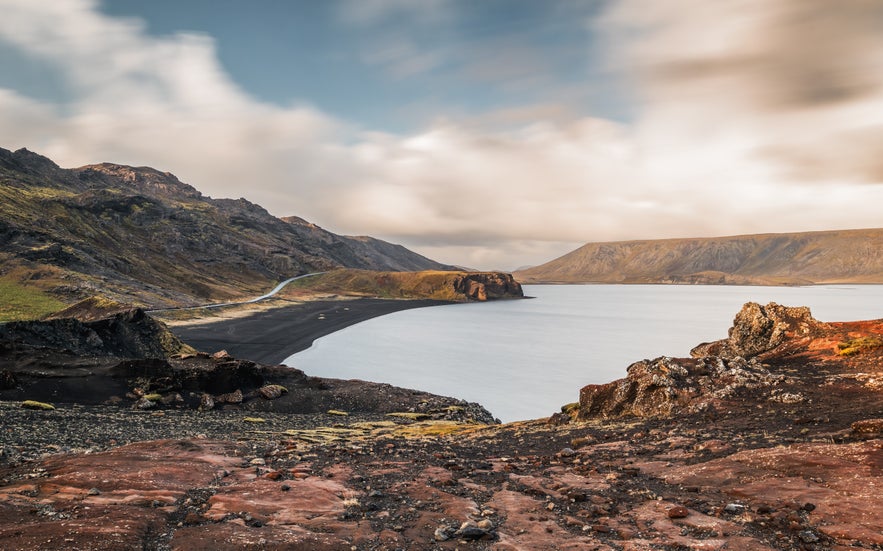 Near Krysuvik is Kleifarvatn, a deep and moody lake nestled between volcanic ridges on the Reykjanes Peninsula. It’s one of the largest lakes in southwest Iceland and has no visible rivers flowing in or out, giving it a mysterious, untouched feel.
Near Krysuvik is Kleifarvatn, a deep and moody lake nestled between volcanic ridges on the Reykjanes Peninsula. It’s one of the largest lakes in southwest Iceland and has no visible rivers flowing in or out, giving it a mysterious, untouched feel.
The shoreline is dotted with black sand beaches, lava formations, and steep cliffs. The vast stillness of the water, surrounded by rugged volcanic slopes and eerie silence, gives the lake a powerful, almost otherworldly presence. It’s a peaceful stop with few crowds, perfect for a scenic break between geothermal sights.
Fagradalsfjall, Litli-Hrutur, and Sundhnukagigar Volcanos
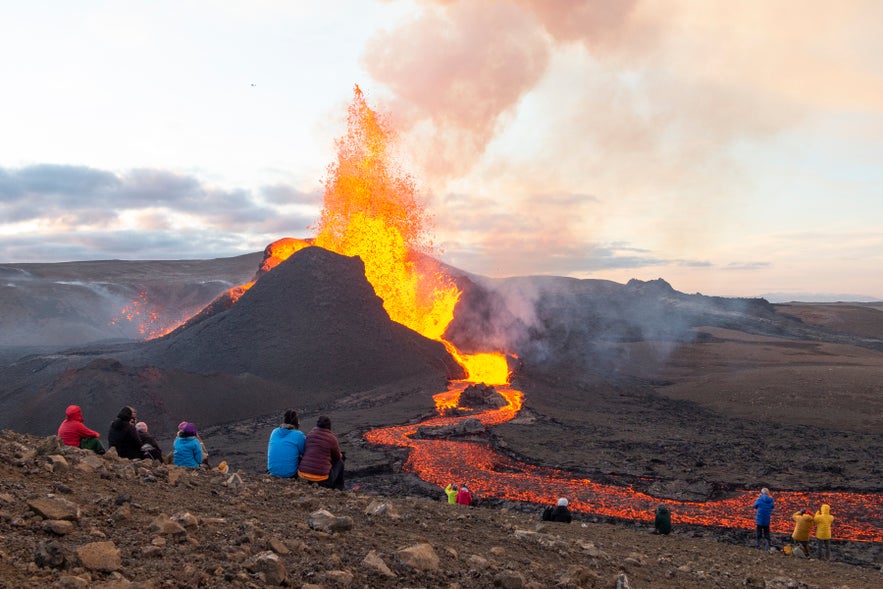 These three eruption sites on the Reykjanes Peninsula are part of the region’s active volcanic zone and have dramatically reshaped the terrain in just the past few years.
These three eruption sites on the Reykjanes Peninsula are part of the region’s active volcanic zone and have dramatically reshaped the terrain in just the past few years.
Fagradalsfjall erupted in 2021 and 2022, followed by Litli-Hrutur in 2023. A series of powerful eruptions then occurred at Sundhnukagigar, beginning in late 2023 and continuing through 2024 and into 2025. The latest eruption began on July 16, 2025, further expanding the lava fields and reinforcing the region’s ever-changing nature.
These events have created craters, steaming fissures, and fresh lava flows that continue to draw hikers, photographers, and geologists alike.
The terrain is raw and ever-changing, with marked trails leading to panoramic viewpoints when conditions permit. Access can vary, so it’s essential to check for safety updates before visiting.
If you'd rather not navigate the landscape on your own, a guided afternoon or evening hike to the Reykjanes volcano area is a great way to explore the newest eruption zones with expert insight.
For an unforgettable perspective on the changing landscape, a volcano tour by helicopter is undoubtedly the best way to see it.
- Read more: Best Things To Do on the Reykjanes Peninsula
- Find out: Volcanic Eruptions on the Reykjanes Peninsula
2. Step Aboard a Viking Ship Replica at the Viking World Museum
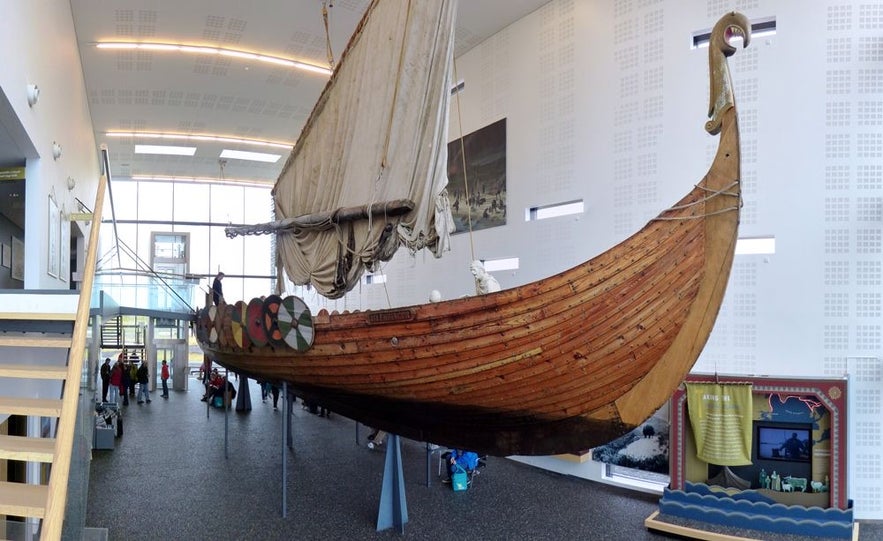
Inside the museum, you can walk onto the ship’s deck, view ancient Viking tools, armor, and mythology displays, and follow educational exhibits in English and Icelandic. There’s also a children’s activity area, a gift shop, and a small cafe where you can relax and grab a snack.
The museum is open daily from 10:00 to 16:00 in winter (October to April) and 10:00 to 18:00 in summer (May to September). Be sure to get your entrance ticket to the Viking Museum in advance for a smooth experience.
- Read more: The Best Museums in Iceland
1. Take a Dip in the Iconic Blue Lagoon (Near Keflavik)
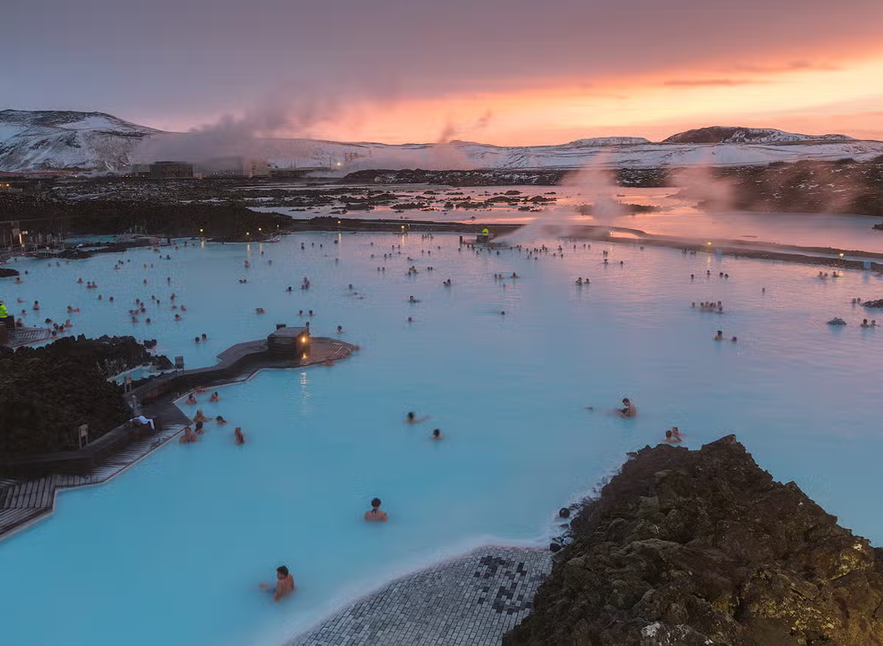
Surrounded by dark lava fields, its milky-blue geothermal waters appear especially luminous. You can float in the warm water, relax with a silica mud mask, and enjoy a drink at the swim-up bar. The site also includes steam rooms, a sauna, in-water massage services, and two upscale restaurants. It’s open year-round and stays warm even in winter.
Advance booking is required. The Blue Lagoon comfort ticket is the most popular choice and includes lagoon access, a silica mud mask, and one drink from the in-water bar. For a more luxurious experience with added perks, choose the premium ticket to the Blue Lagoon.
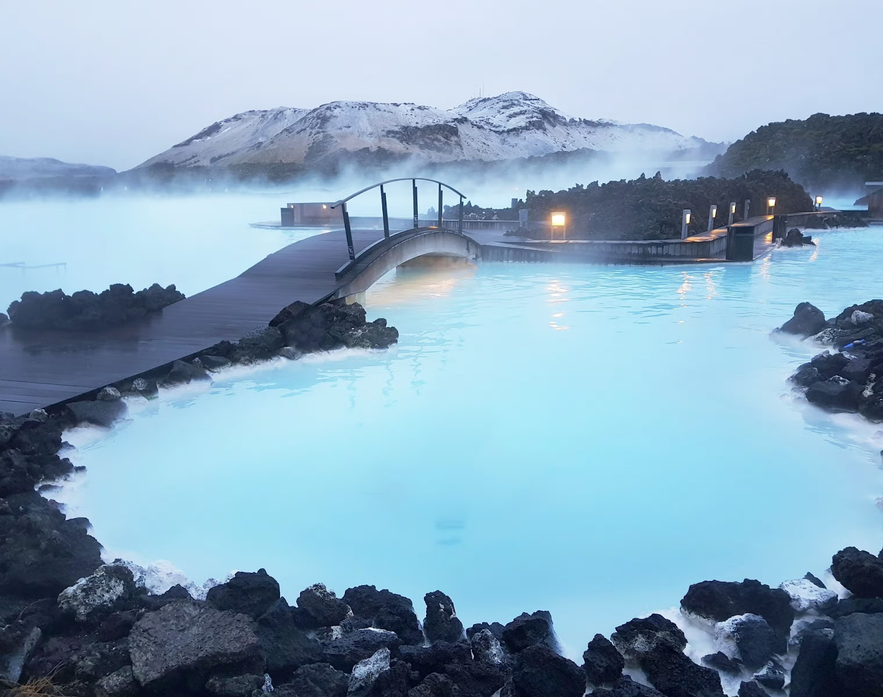
Whether it’s the first stop after landing or your last indulgence before heading home, the Blue Lagoon is Iceland’s ultimate arrival or farewell ritual. It’s one of the unmissable things to do in Keflavik, and no trip feels complete without a soak in its surreal, steamy waters.
- Read more: Guide to Iceland's Blue Lagoon
- Learn about: The Best Hot Springs and Geothermal Pools in Iceland
What To Know About Going to Keflavik
Now that you have a list of things to do in Keflavik, it’s time to start planning your trip. Here’s what to know about how to get there, when to visit, where to stay, what to eat, what to pack, and practical tips for campervan travel and road trips.
How To Get to Keflavik
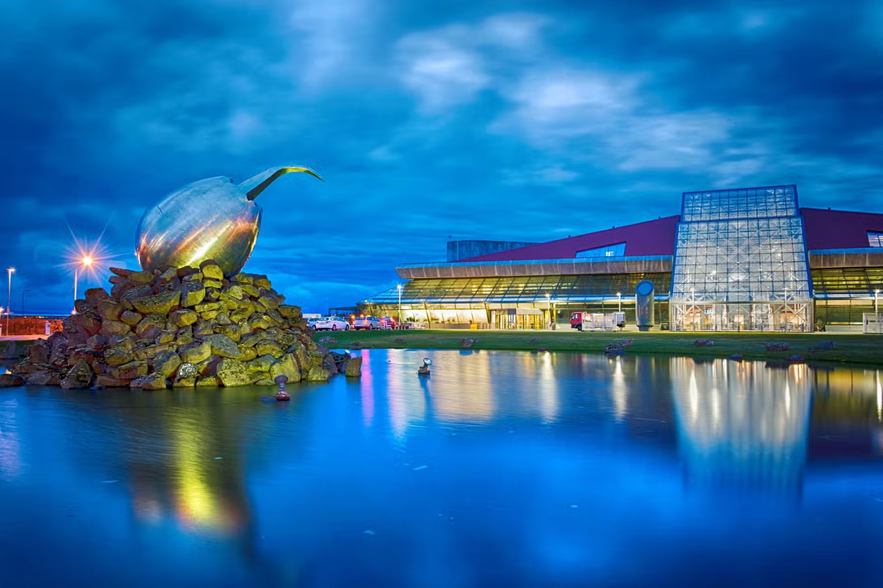
The most flexible option is to rent a car at the airport, especially if you're planning to explore the Reykjanes Peninsula. Major car rental companies operate on-site, and Route 41 takes you straight into town. If you’d rather not drive, taxis are always available outside the arrivals hall, and many hotels offer convenient shuttle services.
Budget travelers can hop on Straeto’s bus number 55, which runs between the airport, Keflavik, and Reykjavik. It’s affordable, reliable, and easy to pay by card or the Klappid app. However you choose to travel, getting to Keflavik is quick and simple. To arrive at Keflavik town center, get off the bus at the Hringbraut or Nordurtun stop.
- Read more: How to Travel Around Iceland Without a Car
- Check out: Reykjavik City Buses
The Best Time To Visit Keflavik
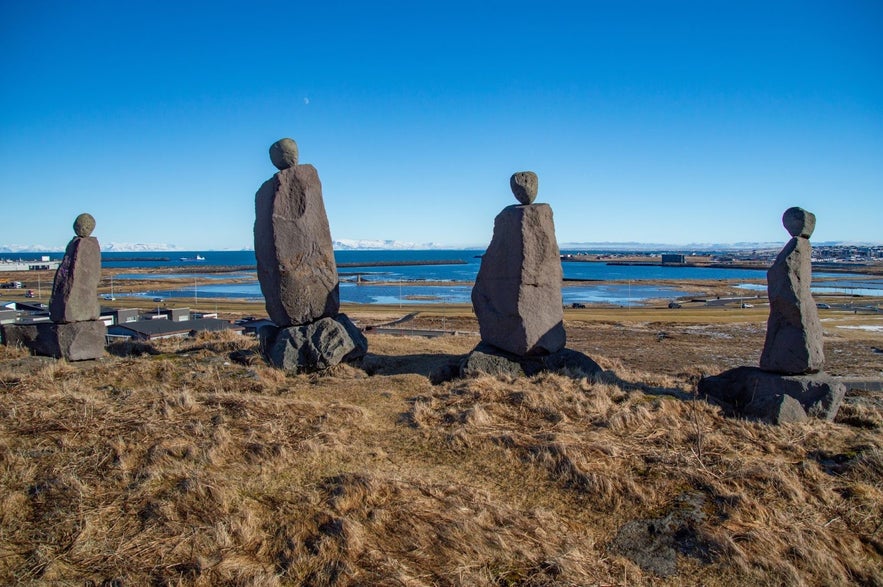 Keflavik is a great destination any time of year, and the best season to visit really depends on what kind of adventure you're after.
Keflavik is a great destination any time of year, and the best season to visit really depends on what kind of adventure you're after.
Summer (May to September) brings mild weather, long daylight hours, and fun local events like the Ljosanott Festival (Night of Lights festival) in August. It’s the perfect time for coastal walks, scenic drives, and soaking in Iceland’s midnight sun.
For northern lights seekers, October to April is your window. During this period, the darker skies and lower light pollution make Keflavik an ideal base for aurora spotting. It’s also the quiet season, with fewer tourists and lower prices, plus year-round access to top spots like the Blue Lagoon and Viking World.
If you're after a sweet spot with fewer crowds and decent weather, try late May or early September. Shoulder seasons like April and October are ideal for budget travelers too, with great deals on flights, hotels, and car rentals.
- Find out: Best Time to Visit Iceland
- See also: The Weather & Temperature in Iceland
Where To Stay in Keflavik
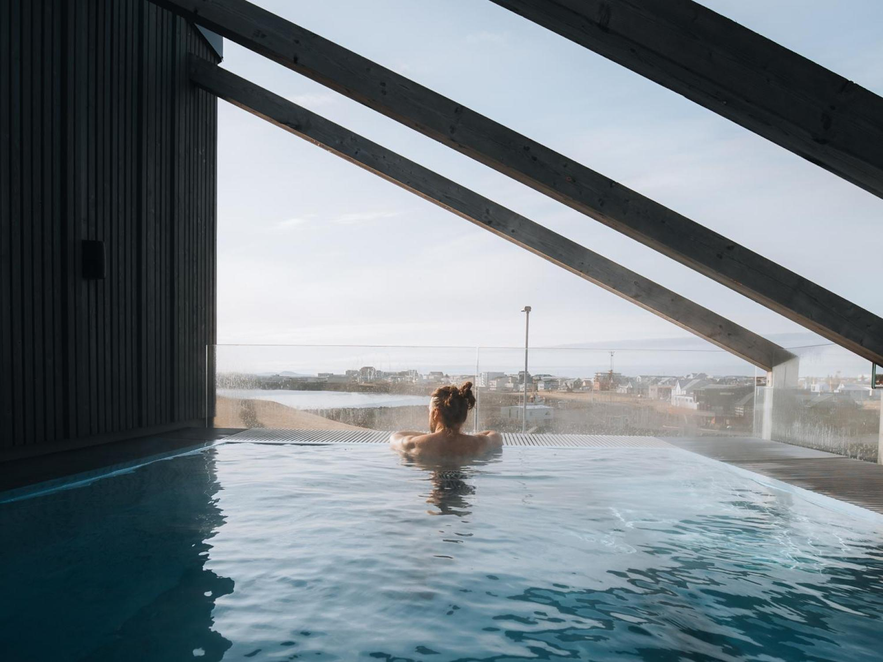
For comfort and convenience, Hotel Berg is a popular pick near the marina. It offers stylish rooms, a rooftop hot tub, and a quiet location that’s still close to restaurants and walking trails. Hotel Duus, right by the harbor, is another solid choice with clean rooms and sea views.
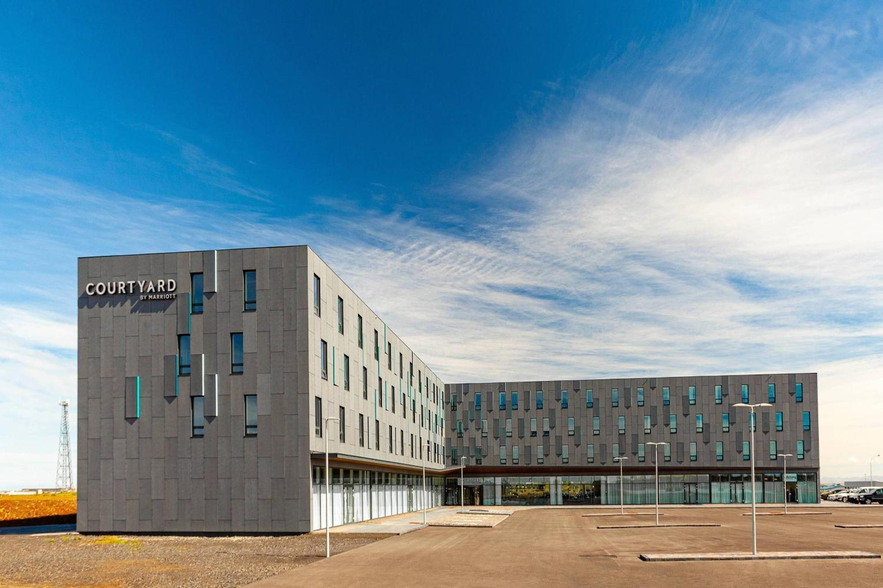
Travelers on a budget will find good value at Start Hostel, Guesthouse 1x6, and Hotel Jazz. These places offer friendly service, clean shared or private rooms, and are usually within walking distance of food shops and bus stops. Some also include kitchen access or free airport shuttles if requested in advance.
Camping in Keflavik
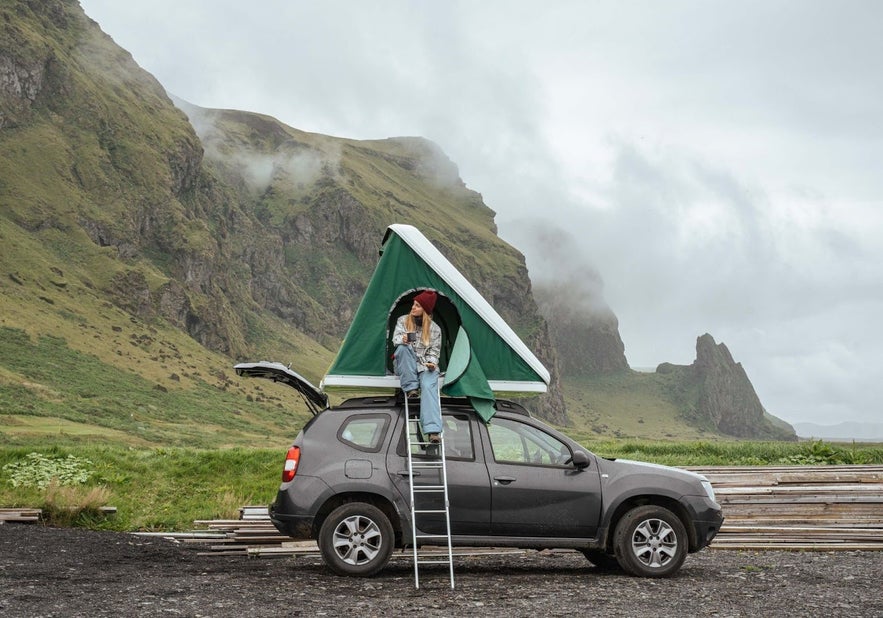 Camping in Keflavik is a practical choice for travelers arriving in or departing from Iceland, thanks to its proximity to the international airport. Several campsites in and around the town cater to both tent campers and campervans, offering essential amenities such as restrooms, showers, and electricity.
Camping in Keflavik is a practical choice for travelers arriving in or departing from Iceland, thanks to its proximity to the international airport. Several campsites in and around the town cater to both tent campers and campervans, offering essential amenities such as restrooms, showers, and electricity.
These sites are well-placed for starting or ending a road trip around the Reykjanes Peninsula. For a quieter atmosphere, consider nearby coastal villages like Sandgerdi or Gardur, where you can camp near the sea with views over Faxafloi Bay.
To stock up on essentials or customize your setup, camping equipment rentals are available in Reykjavik and a few other towns. It's also helpful to review practical tips and information on camping in Iceland before hitting the road.
Campervan Rentals for Exploring Keflavik and Beyond
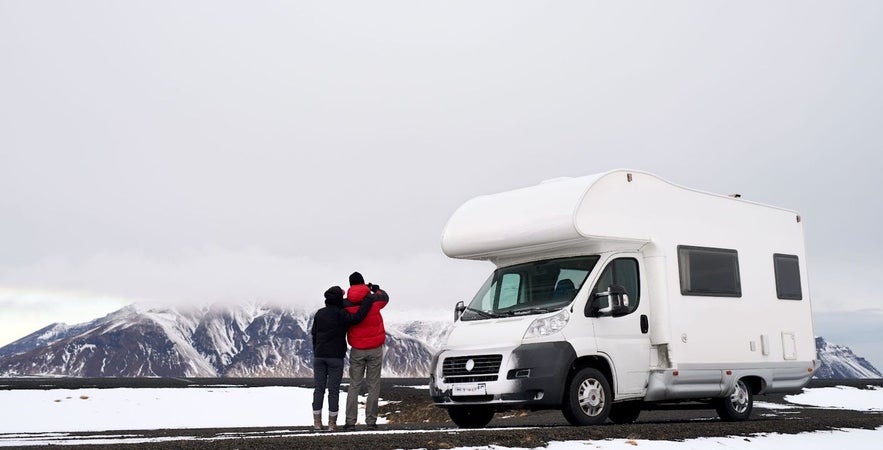 Keflavik is one of the best places in Iceland to rent a campervan. Many rental companies operate directly from the airport, so you can pick up your van right after landing and head straight into nature. It’s a practical option that combines transport and accommodation, offering full flexibility and fewer hotel costs.
Keflavik is one of the best places in Iceland to rent a campervan. Many rental companies operate directly from the airport, so you can pick up your van right after landing and head straight into nature. It’s a practical option that combines transport and accommodation, offering full flexibility and fewer hotel costs.
Most campervans are road-trip ready from the start, with heating, bedding, kitchen gear, and Wi-Fi included. If you're planning to camp your way around the Reykjanes Peninsula or beyond, here are some key tips to remember:
-
Book early for summer. Campervans often sell out between June and August.
-
Use official campsites only. Wild camping is restricted near towns and roads.
-
Plan your supply stops carefully, as grocery store locations and hours in Iceland vary.
-
Check road and weather conditions daily on road.is and vedur.is to stay safe.
-
Refuel often. Don’t wait for the next town, as stations are spaced far apart in rural regions.
Campervan travel opens up endless things to do in Keflavik and beyond, giving you the freedom to explore at your own pace.
Where To Eat in Keflavik
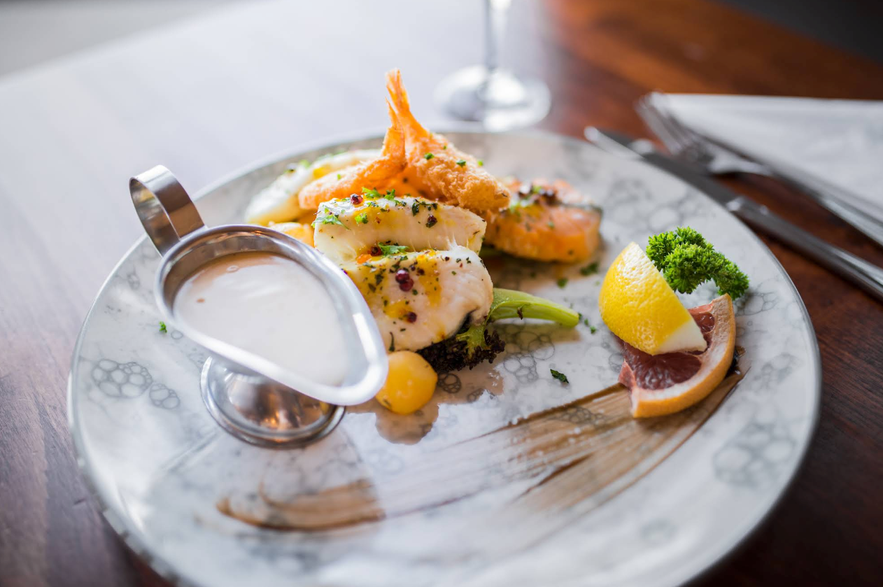
Kaffi Duus, within Hotel Duus, is a local favorite for seafood with a harbor view, while Kef Restaurant in Hotel Keflavik offers beautifully plated Icelandic mains in a stylish setting. For comfort food, Antons Mamma Mia is a go-to for pizza and pasta in a laid-back space.
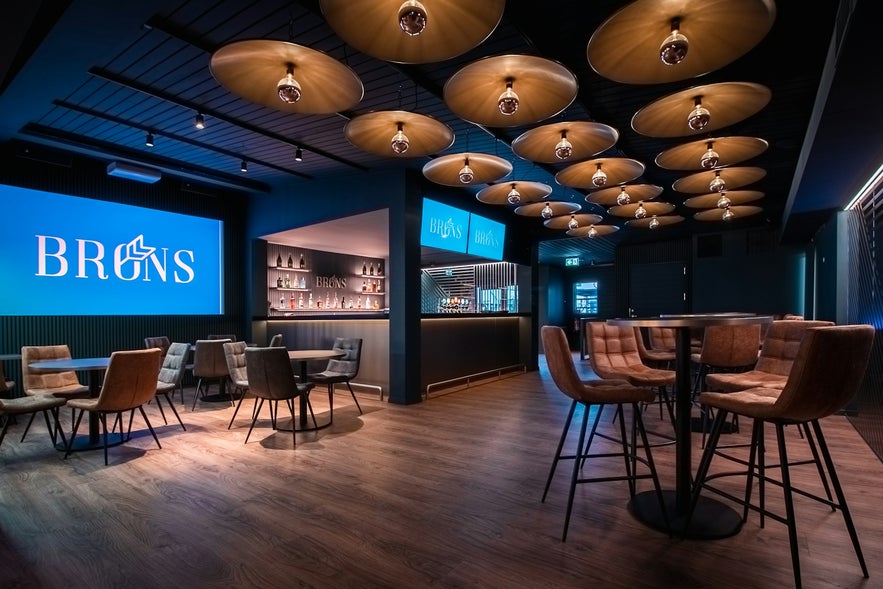
Photo from Brons.
One of the liveliest spots in town is Brons, a bar and restaurant popular with both locals and visitors. Known for its hearty menu of burgers, wings, and other comfort foods, Brons combines tasty meals with a fun, social atmosphere. Guests can enjoy casual dining while watching live sports, playing darts, or hanging out with friends.
If you're short on time, grab a hot dog loaded with crispy onions from Pulsuvagninn or a burger from Olsen Olsen. International options are easy to find too, including spicy dishes at Biryani and Middle Eastern plates at Oriento. Portions are generous, prices are fair by Iceland standards, and most places welcome walk-ins year-round.
 When it’s time for something sweet, Sigurjonsbakari Bakery in central Keflavik delivers fresh cinnamon rolls, soft kleina, and hearty breads. For those who prefer their treats with a view, Cafe Petite pairs coffee and cake with sweeping sea views.
When it’s time for something sweet, Sigurjonsbakari Bakery in central Keflavik delivers fresh cinnamon rolls, soft kleina, and hearty breads. For those who prefer their treats with a view, Cafe Petite pairs coffee and cake with sweeping sea views.
Whether you're stopping in before a flight or staying the night, trying out Icelandic specialities is one of the best things to do in Keflavik.
What To Pack for Keflavik
 Packing for Keflavik means being ready for fast-changing coastal weather. Even in summer, you can get wind, rain, and sun in a single day. Bring layers, including a waterproof jacket, a fleece or insulated mid-layer, and base layers for added comfort.
Packing for Keflavik means being ready for fast-changing coastal weather. Even in summer, you can get wind, rain, and sun in a single day. Bring layers, including a waterproof jacket, a fleece or insulated mid-layer, and base layers for added comfort.
Footwear matters too. Choose sturdy walking shoes or waterproof boots. For the Blue Lagoon or town pools, pack a swimsuit, flip-flops, and a quick-dry towel. Rentals are available if you forget. A small daypack and refillable water bottle are also handy.
Don't forget essentials like travel insurance, medications, and a camera. Iceland uses plug type F, 230V, so bring an adapter. Additionally, check the weather conditions in Keflavik and dress accordingly, especially if you're heading out to the coast or planning a night to view the northern lights.
- Read more: Tips for Backpacking in Iceland
- See also: What to Wear in Iceland for All Seasons
Road Trips from Keflavik

From Keflavik, you can start exploring right away without detouring into Reykjavik. The roads quickly lead you past lava fields, rugged coastlines, mossy plains, and distant volcanic peaks. It's a relaxed and flexible way to experience Iceland’s raw beauty while saving time and avoiding delays.
Self-Drive Tours from Keflavik
For a ready-made route with car, stays, and highlights planned out, these self-drive itineraries offer unforgettable experiences behind the wheel:
-
5-Day Northern Lights Winter Self-Drive Tour: Chase auroras, soak in hot springs, and visit the Golden Circle and Jokulsarlon Glacier Lagoon.
-
7-Day Self-Drive Tour of the Complete Ring Road: Circle the country with stops at hot springs, waterfalls, fjords, and vibrant small towns.
-
2-Week Self-Drive Tour of the Ring Road & Westfjords: Dive deeper into Iceland’s wildest regions with fjord drives, remote villages, and endless horizons.
-
7-Day Budget Self-Drive Tour of the Ring Road: See Iceland’s natural wonders on a wallet-friendly route packed with scenic highlights.
- Read more: Top Things to Do on the Snaefellsnes Peninsula
- Also check: Best Attractions by the Ring Road of Iceland
- Find the: Best Advice For Renting a Car in Iceland
Summary of Things To Do in Keflavik
 Keflavik isn’t just an airport town where you can make the most of a layover in Iceland. It’s a gateway to geothermal landscapes, coastal views, and cultural landmarks. From the Blue Lagoon and Viking World Museum to northern lights spotting, lava fields, and quiet harbor walks, there are plenty of things to do in Keflavik.
Keflavik isn’t just an airport town where you can make the most of a layover in Iceland. It’s a gateway to geothermal landscapes, coastal views, and cultural landmarks. From the Blue Lagoon and Viking World Museum to northern lights spotting, lava fields, and quiet harbor walks, there are plenty of things to do in Keflavik.
Despite its small size, Keflavik is easy to reach by rental car, bus, or taxi from Reykjavik or the airport. You’ll find a surprising number of local restaurants, cafes, and shops around town. Packing smart is essential, as the coastal weather can shift quickly.
The town also sits right on the edge of the Reykjanes Peninsula, a region filled with steam vents, volcanic craters, sea cliffs, and rugged hiking trails. By car or campervan, you can easily reach other top destinations in southwest Iceland, making Keflavik a convenient launch point for day trips or longer road adventures.
Whether you used Keflavik as a base or squeezed in a visit before your flight, we’d love to hear what you explored. Share your top things to do in Keflavik or helpful tips in the comments and help others plan their stop in Iceland’s coastal gateway.

